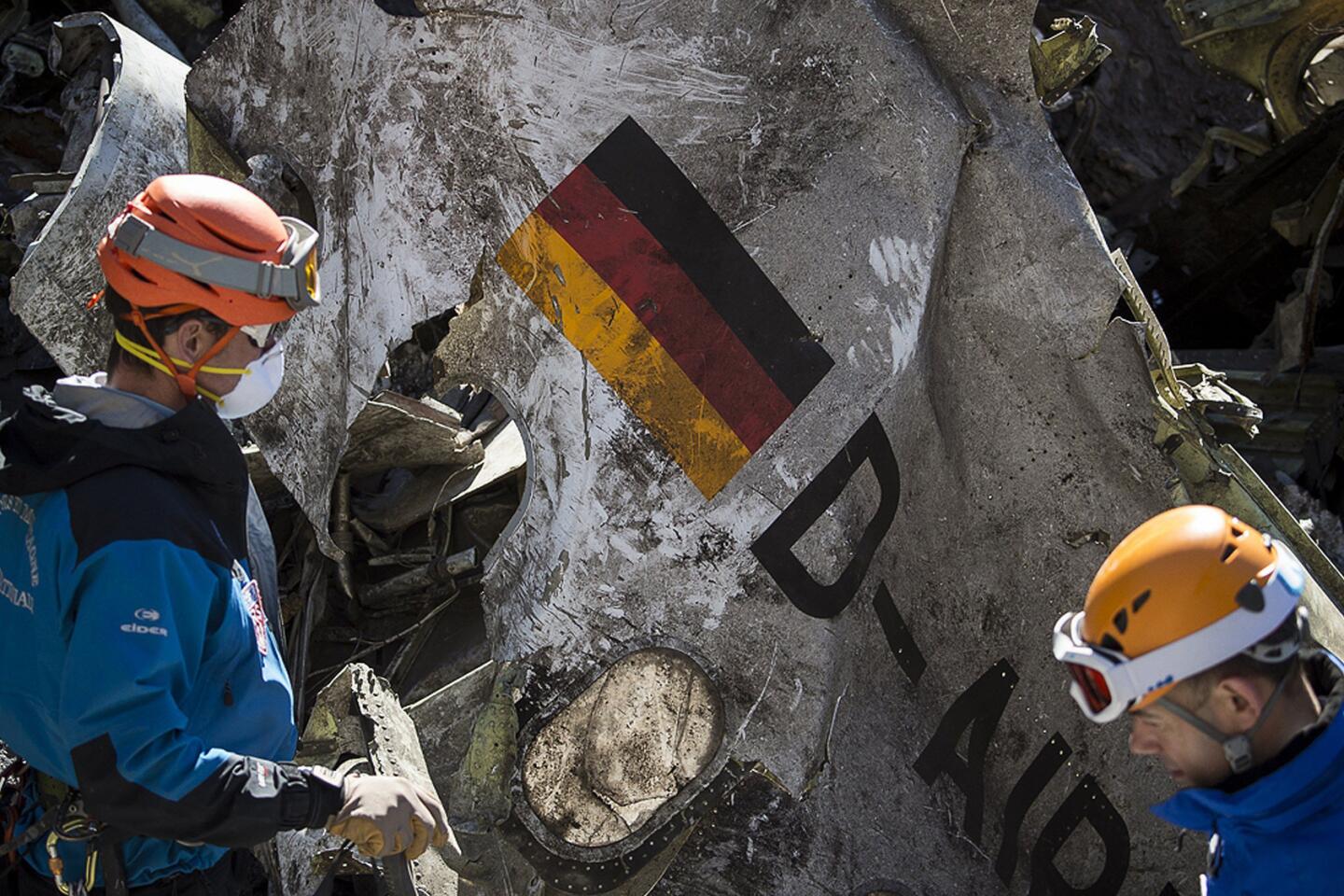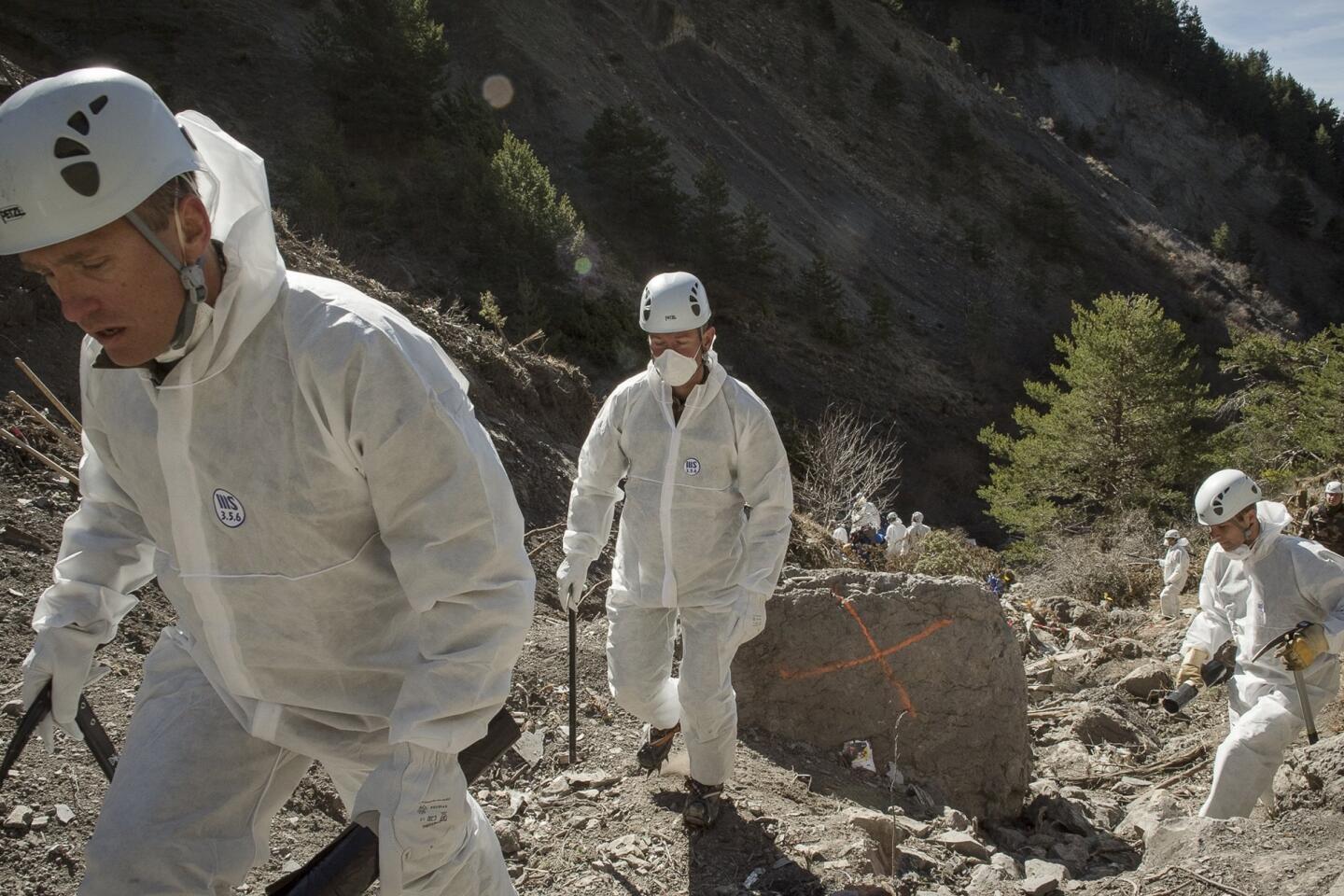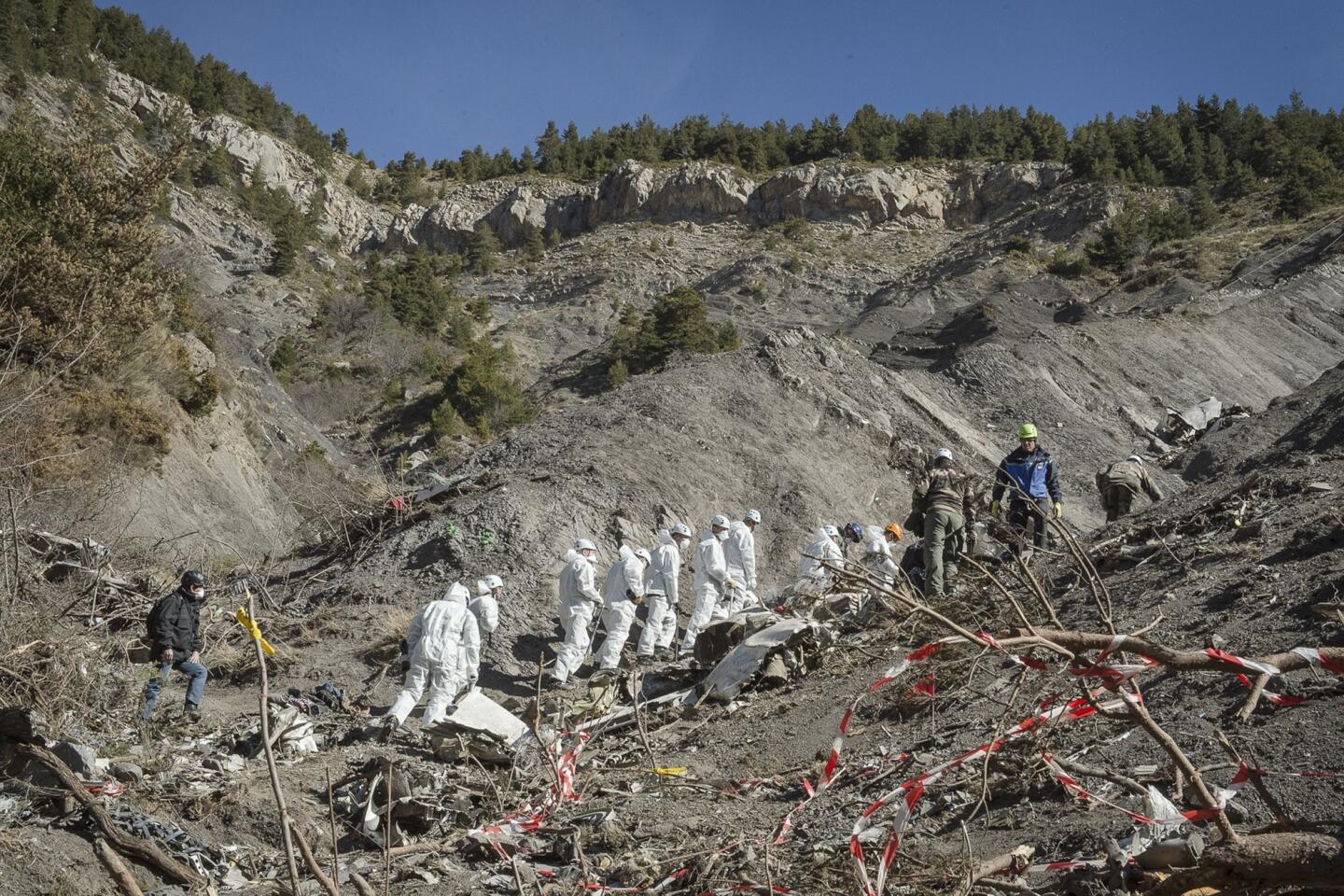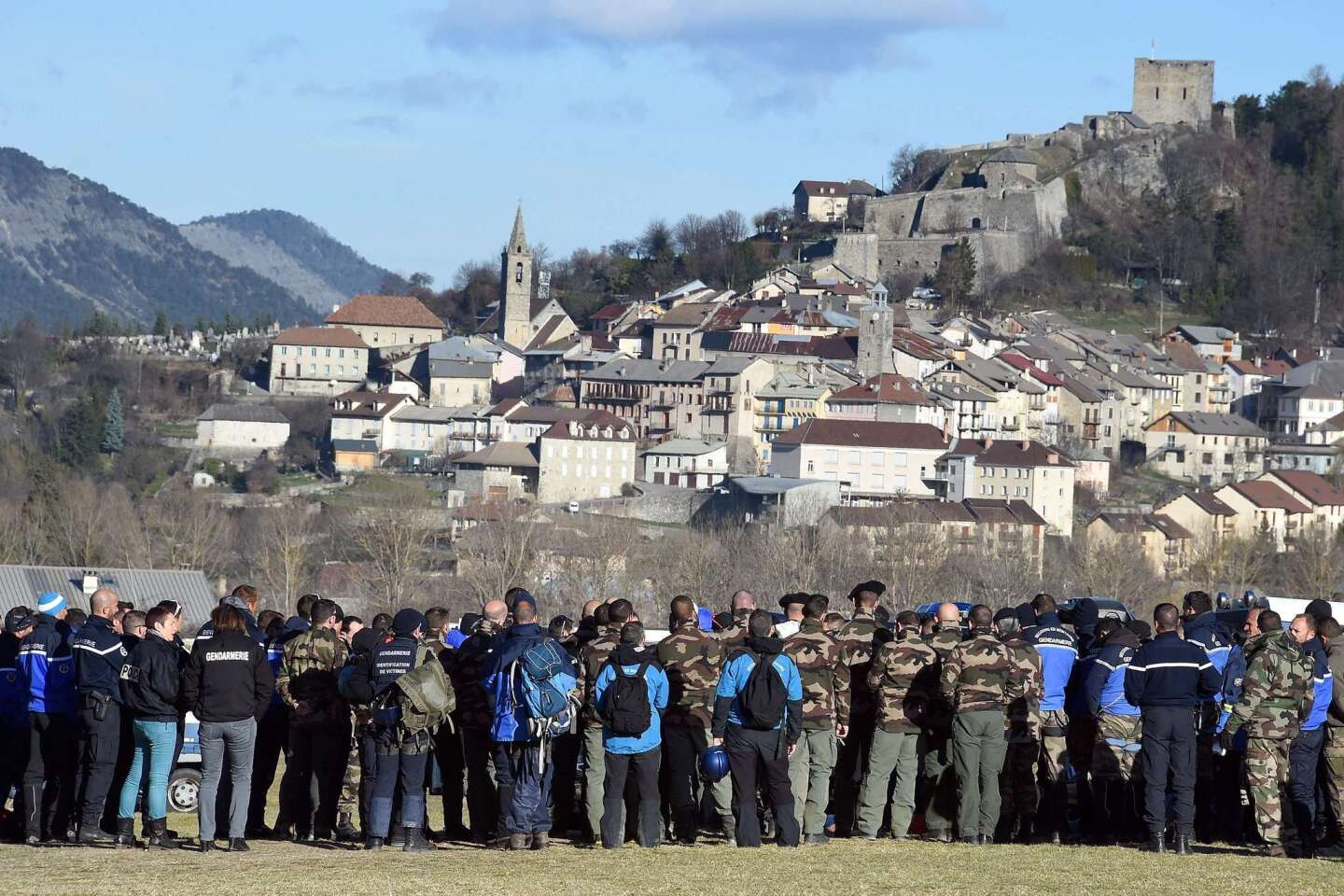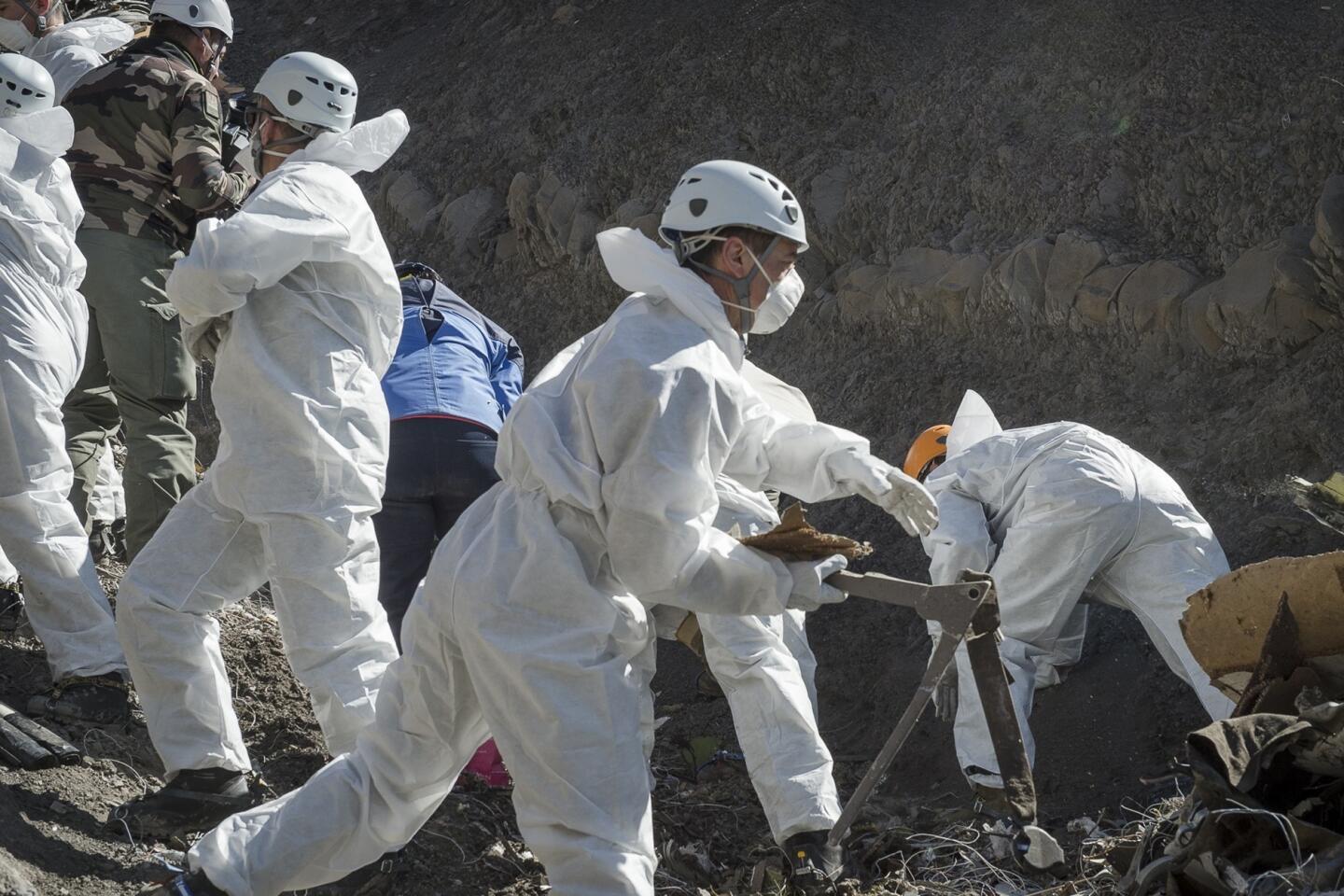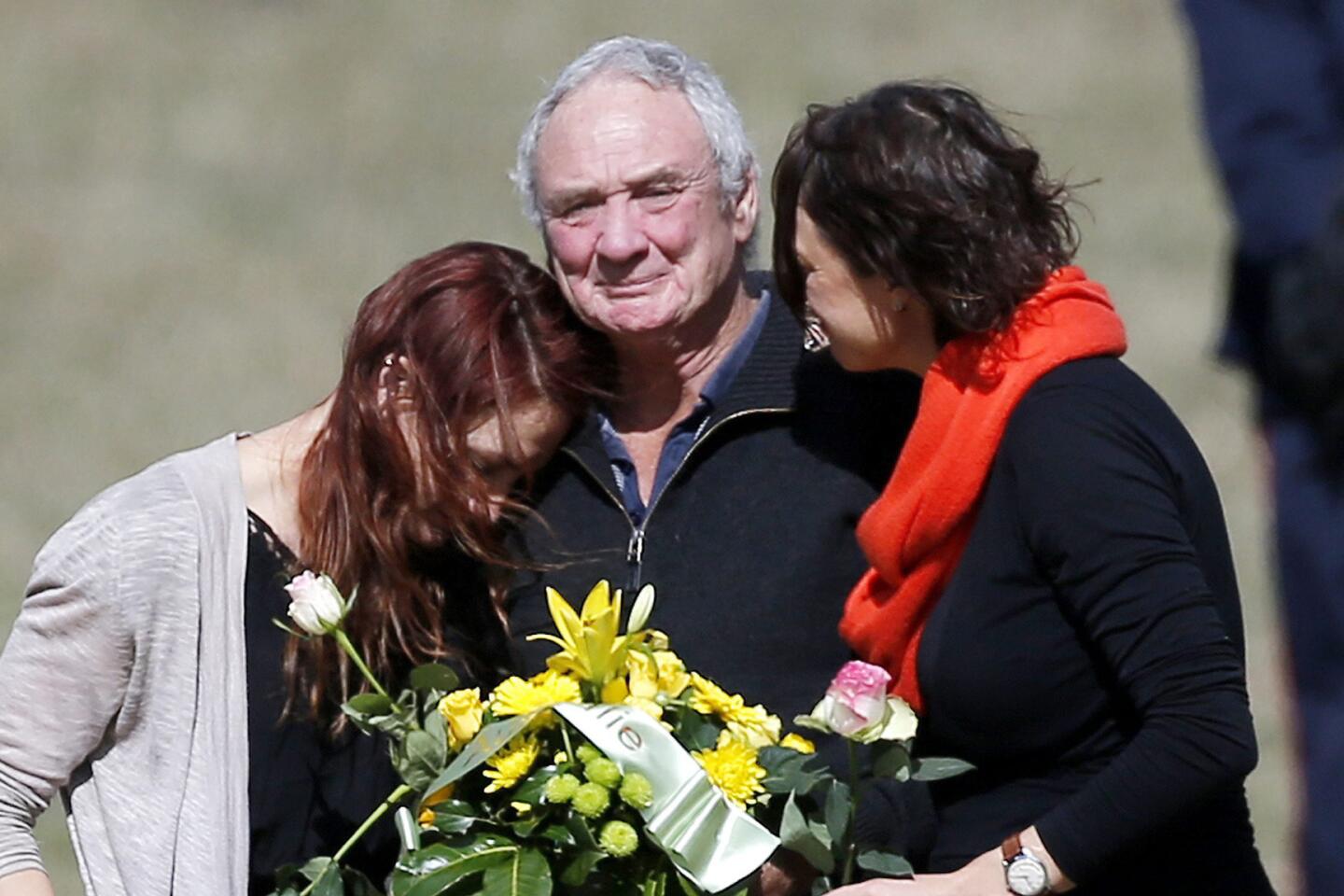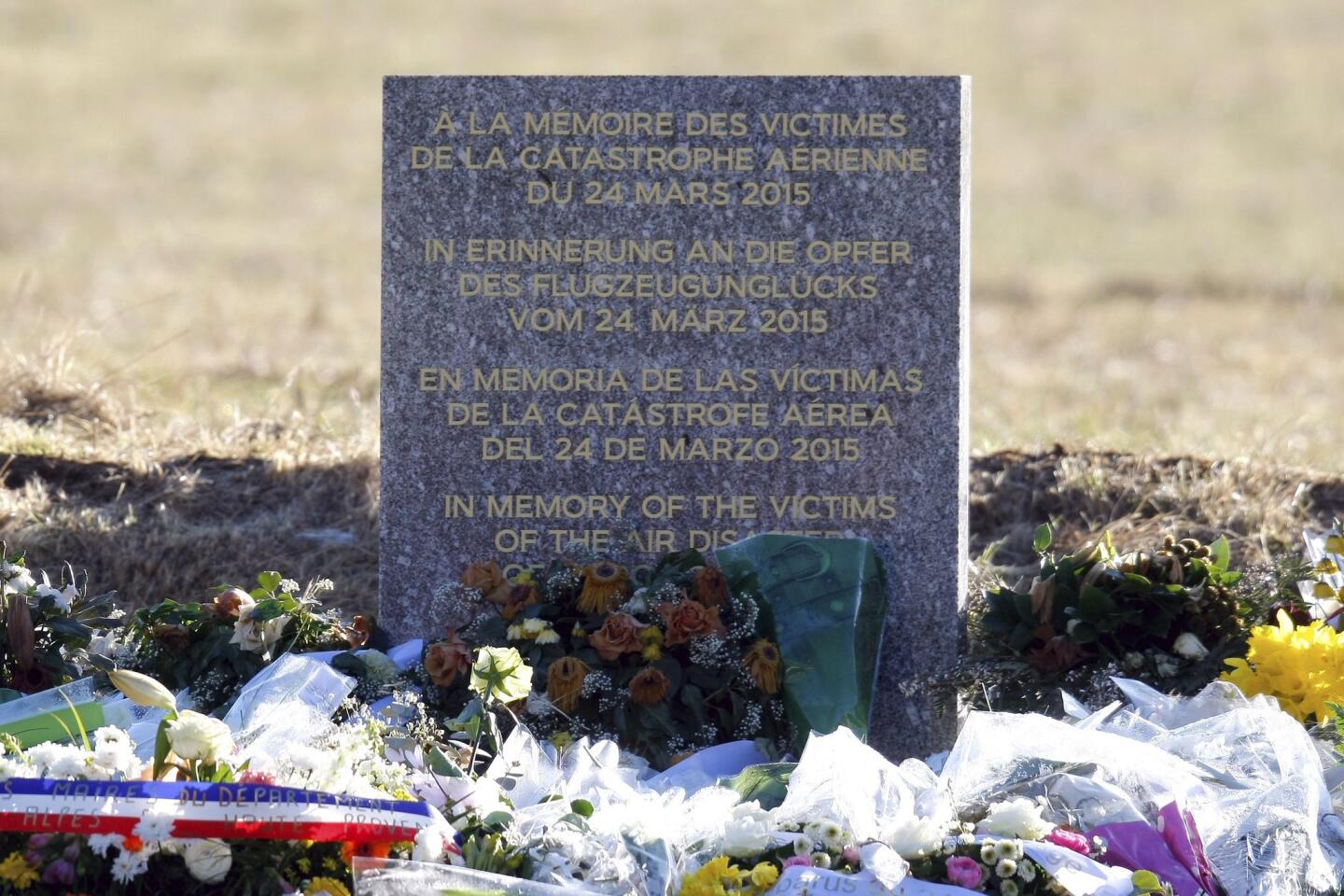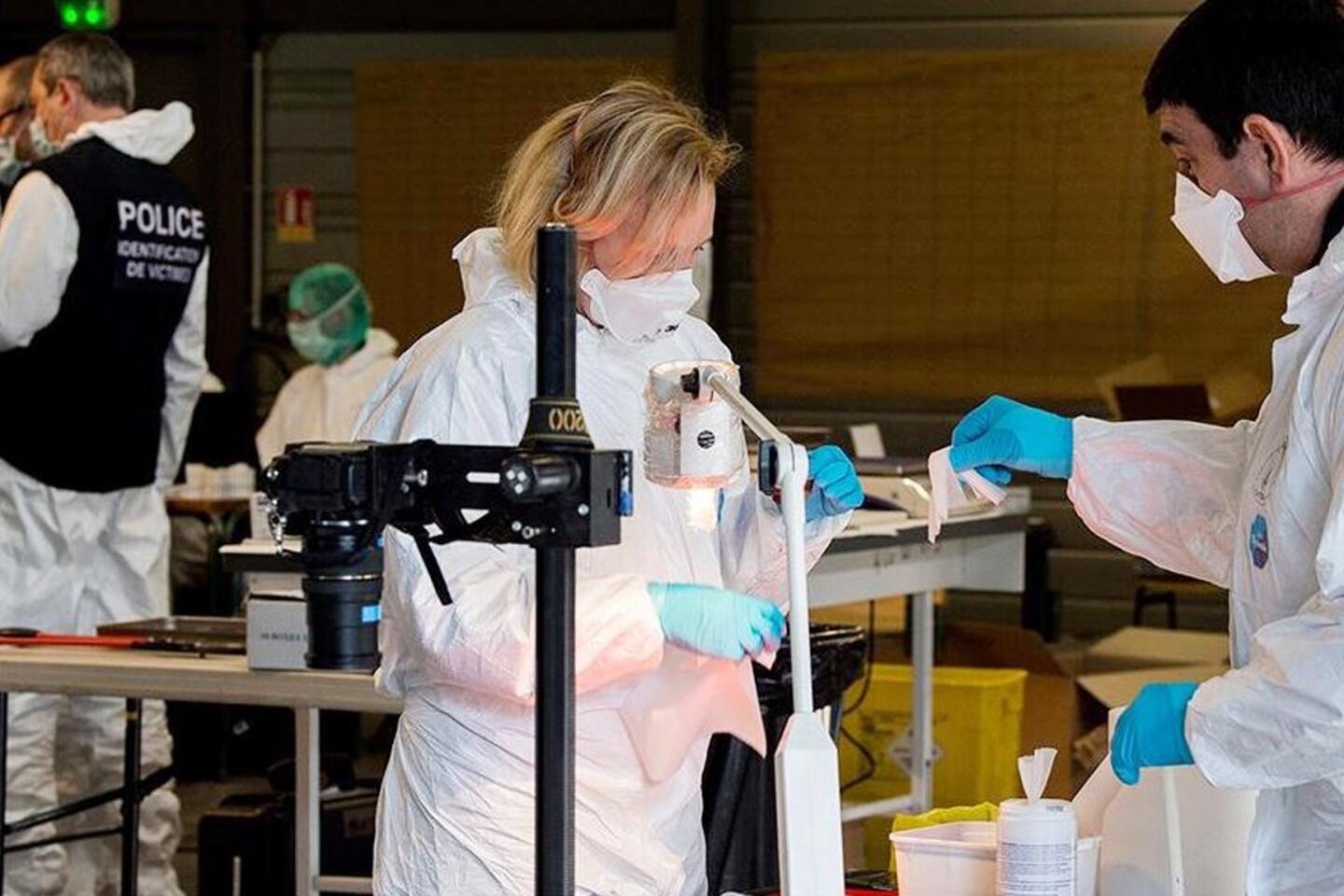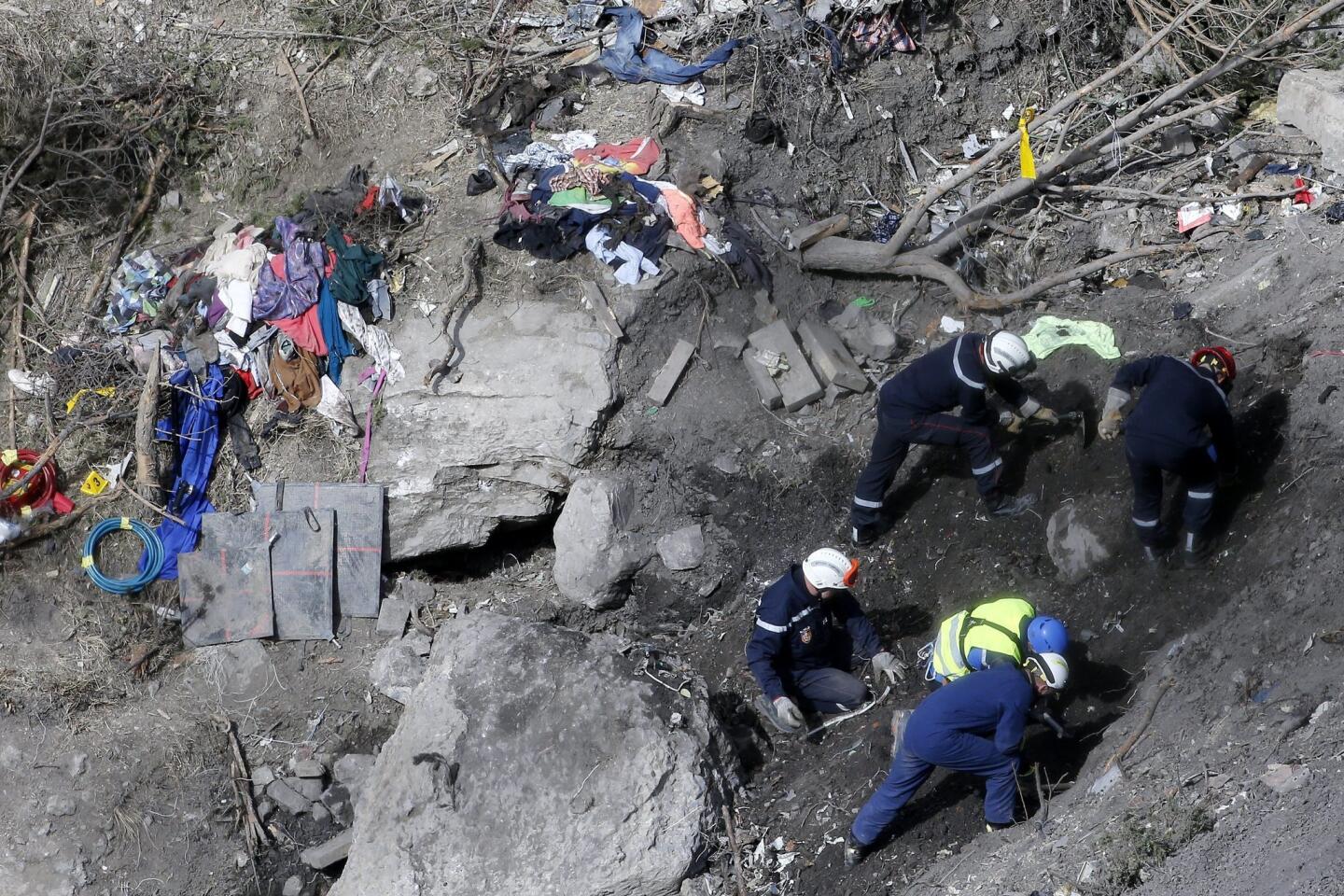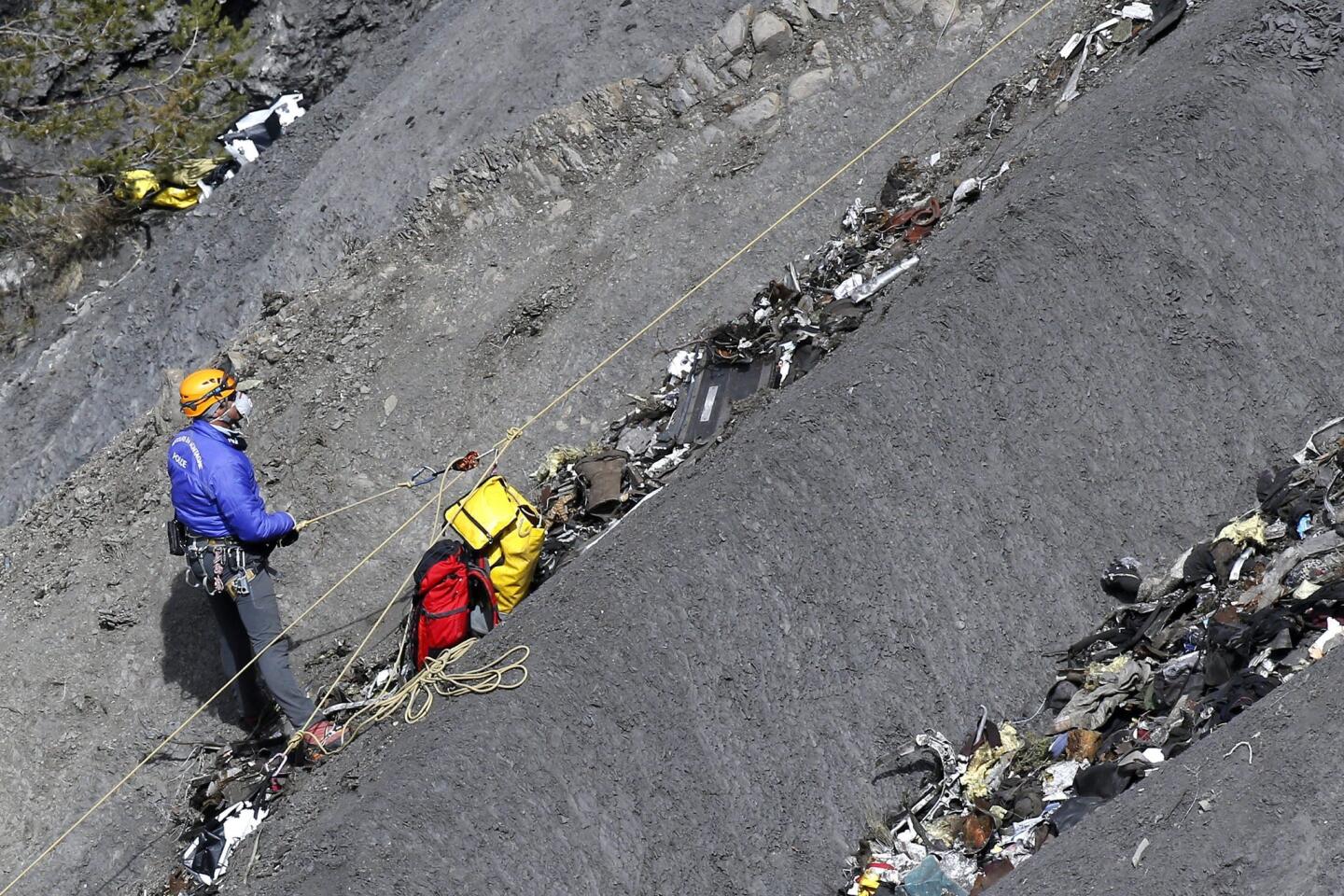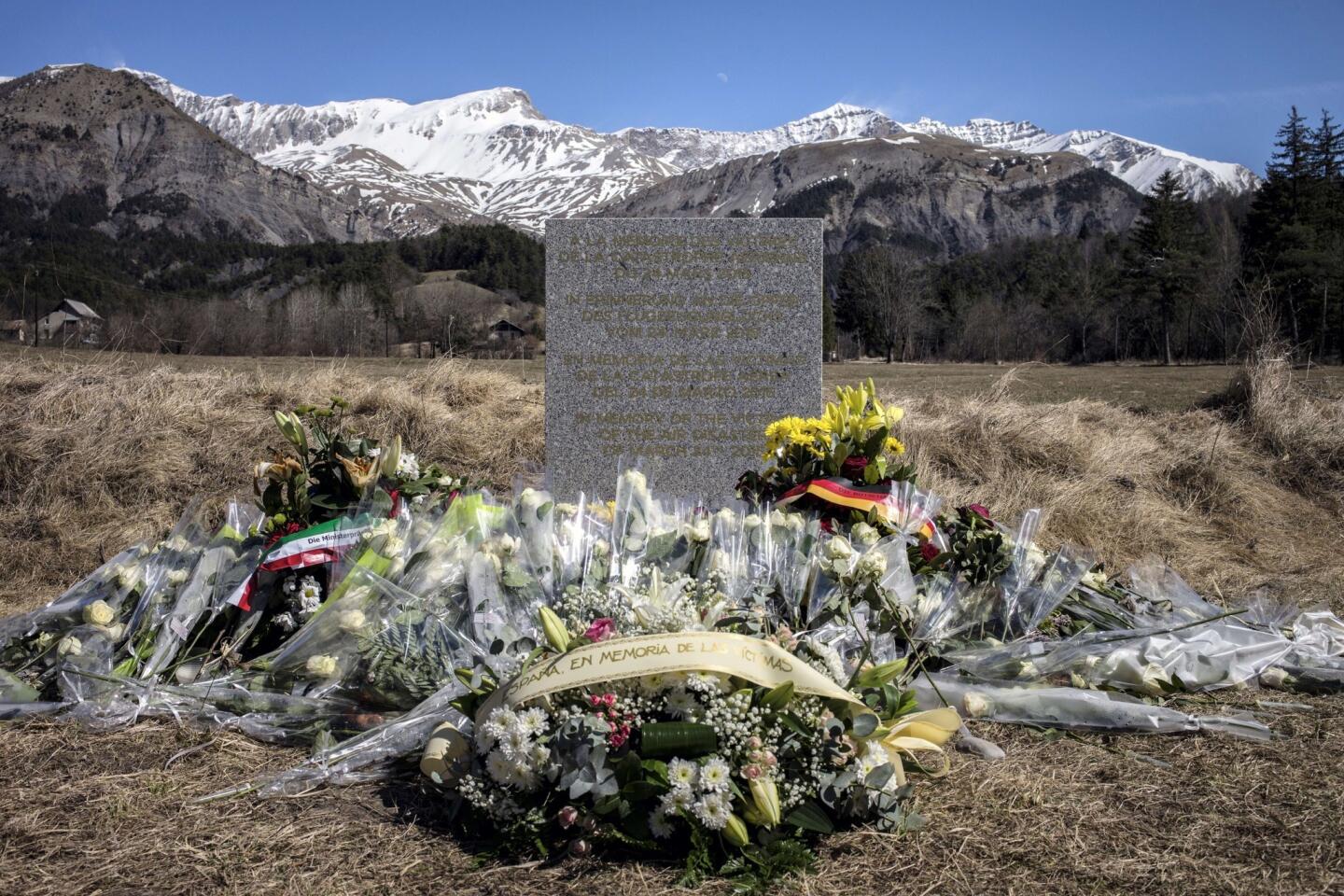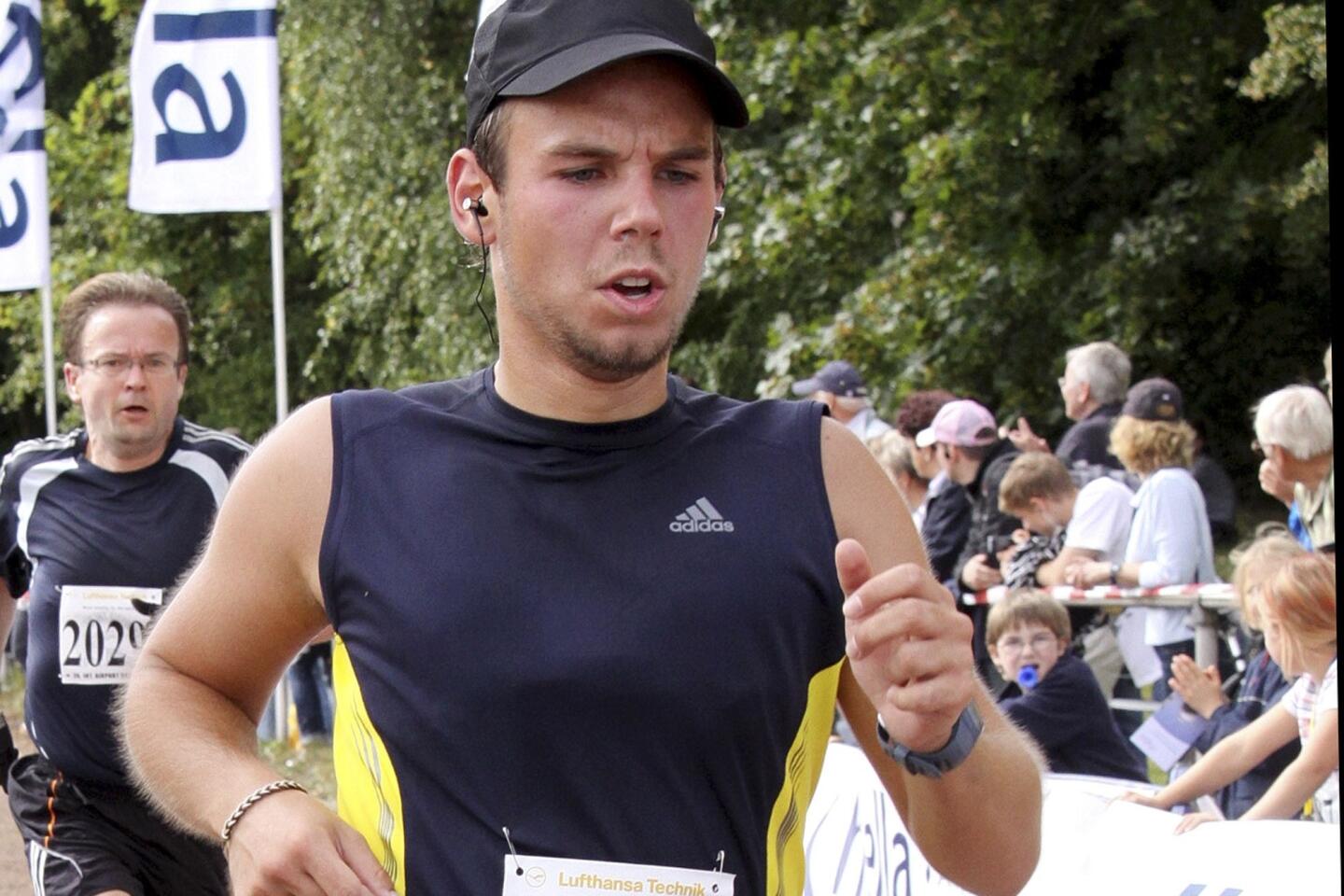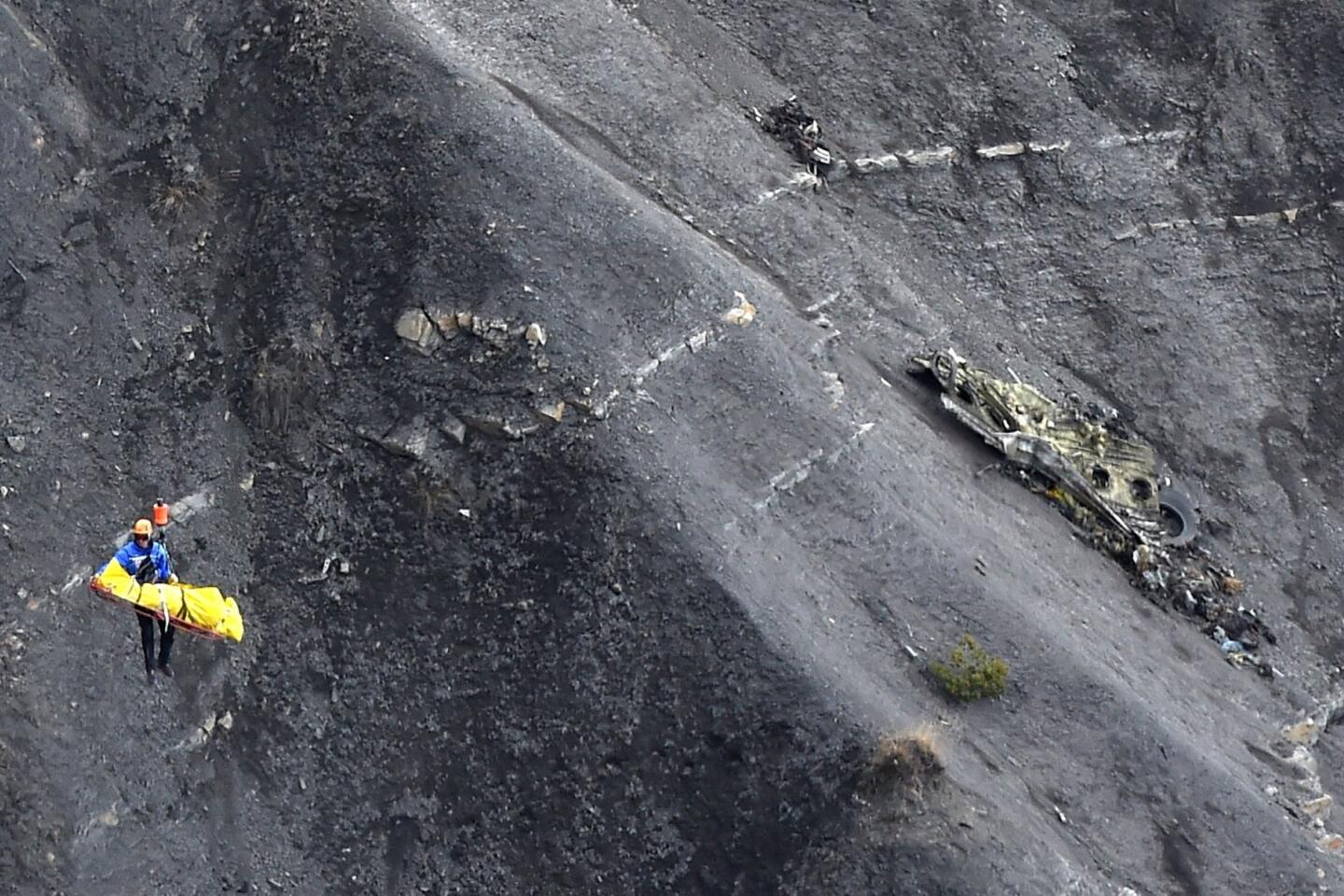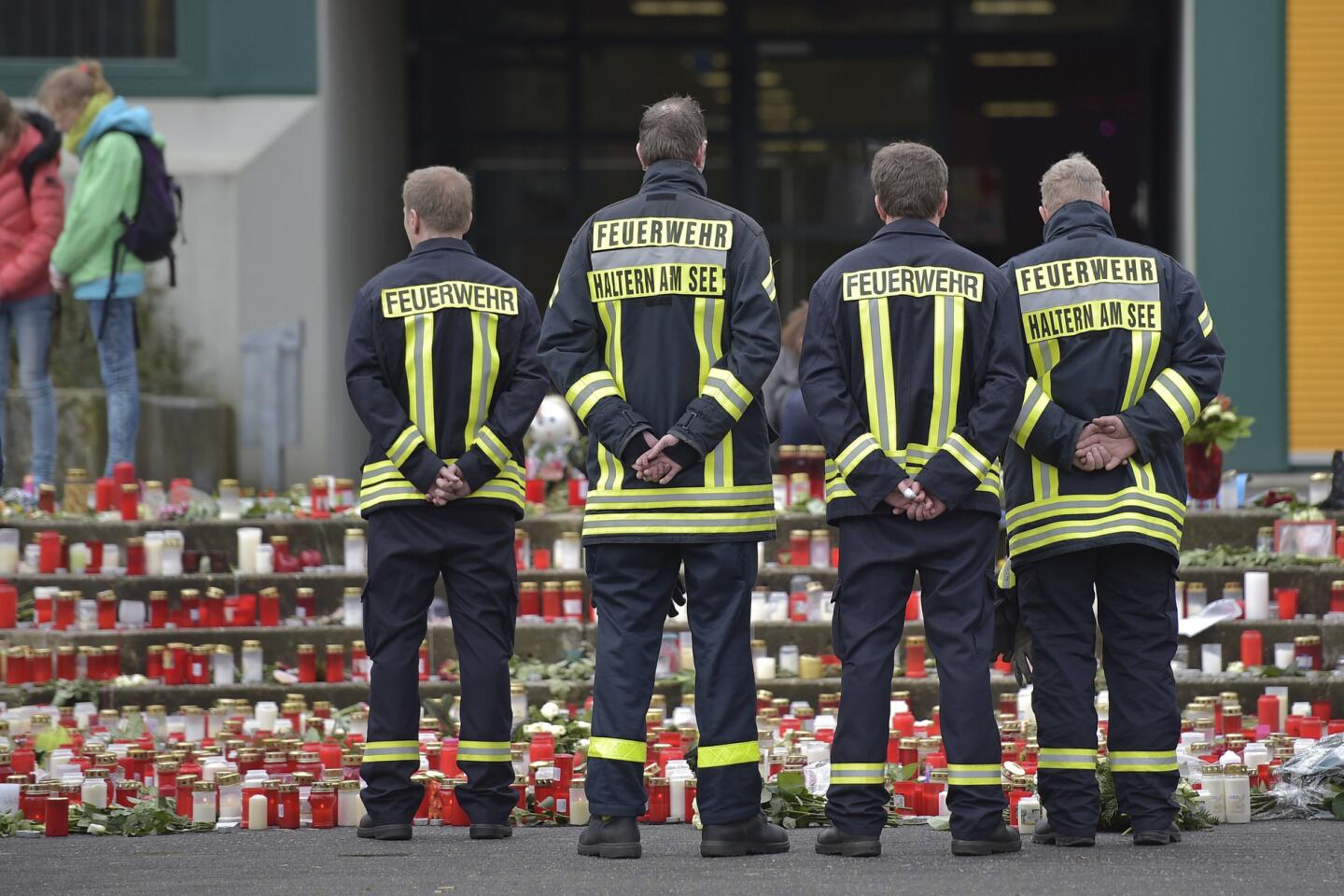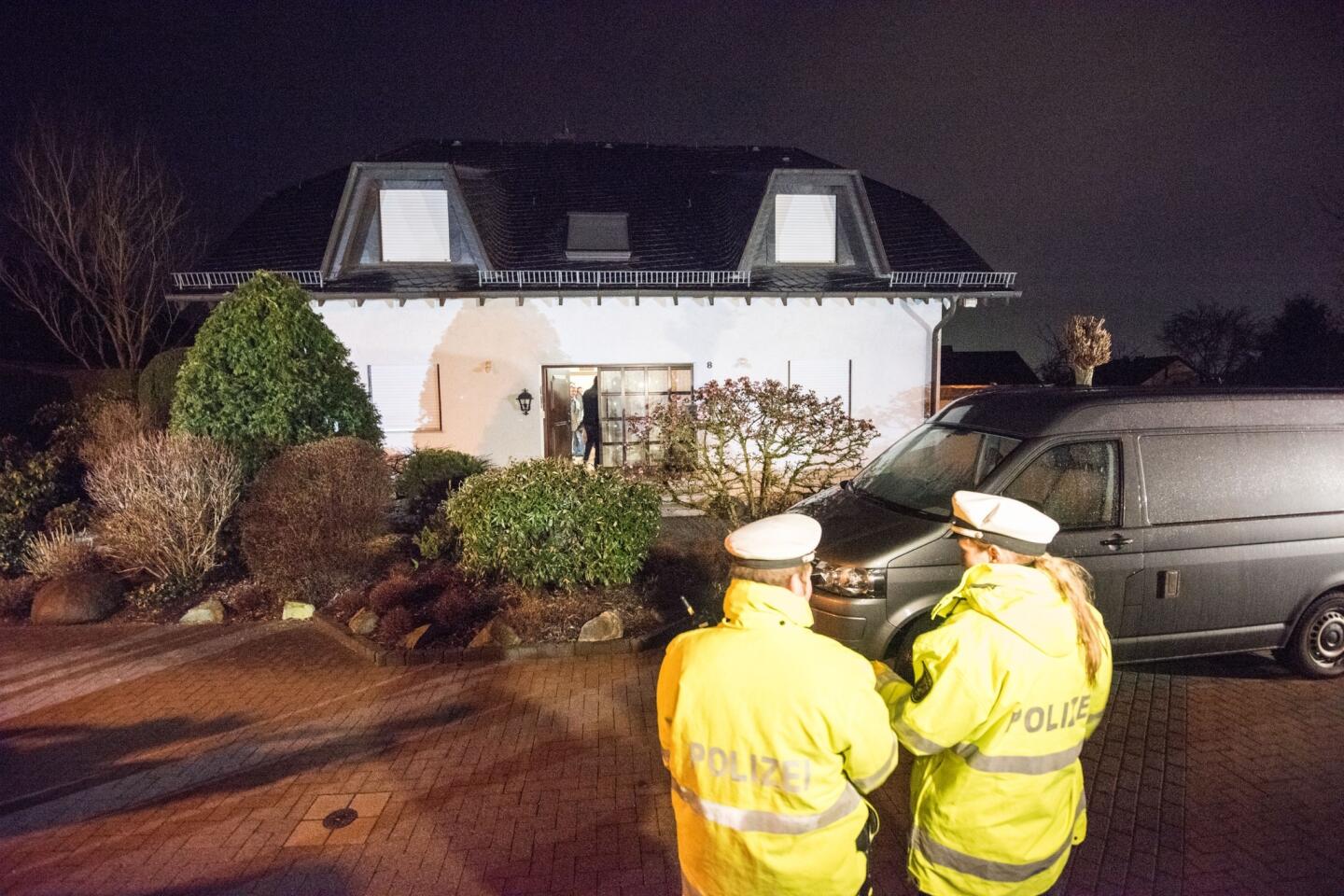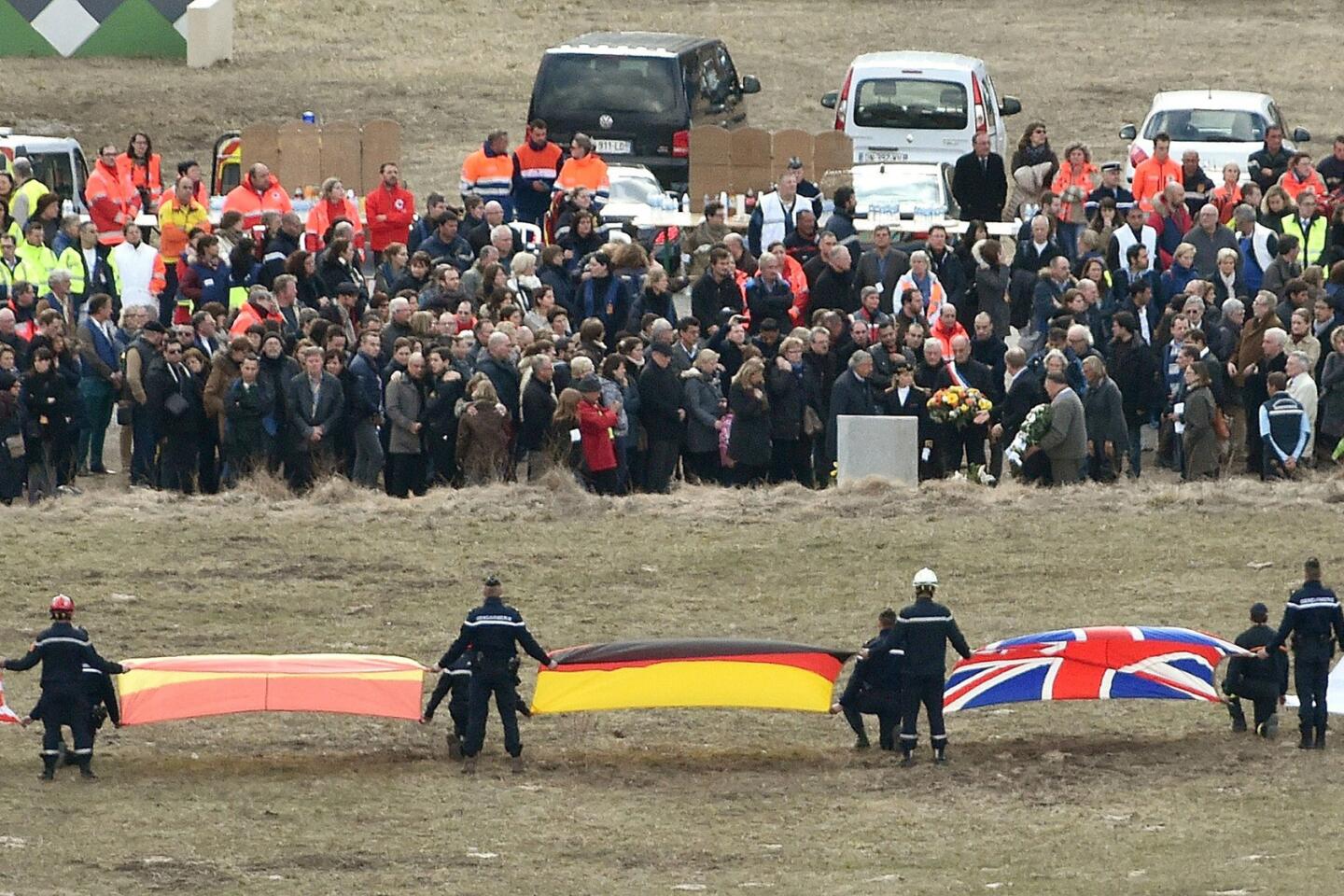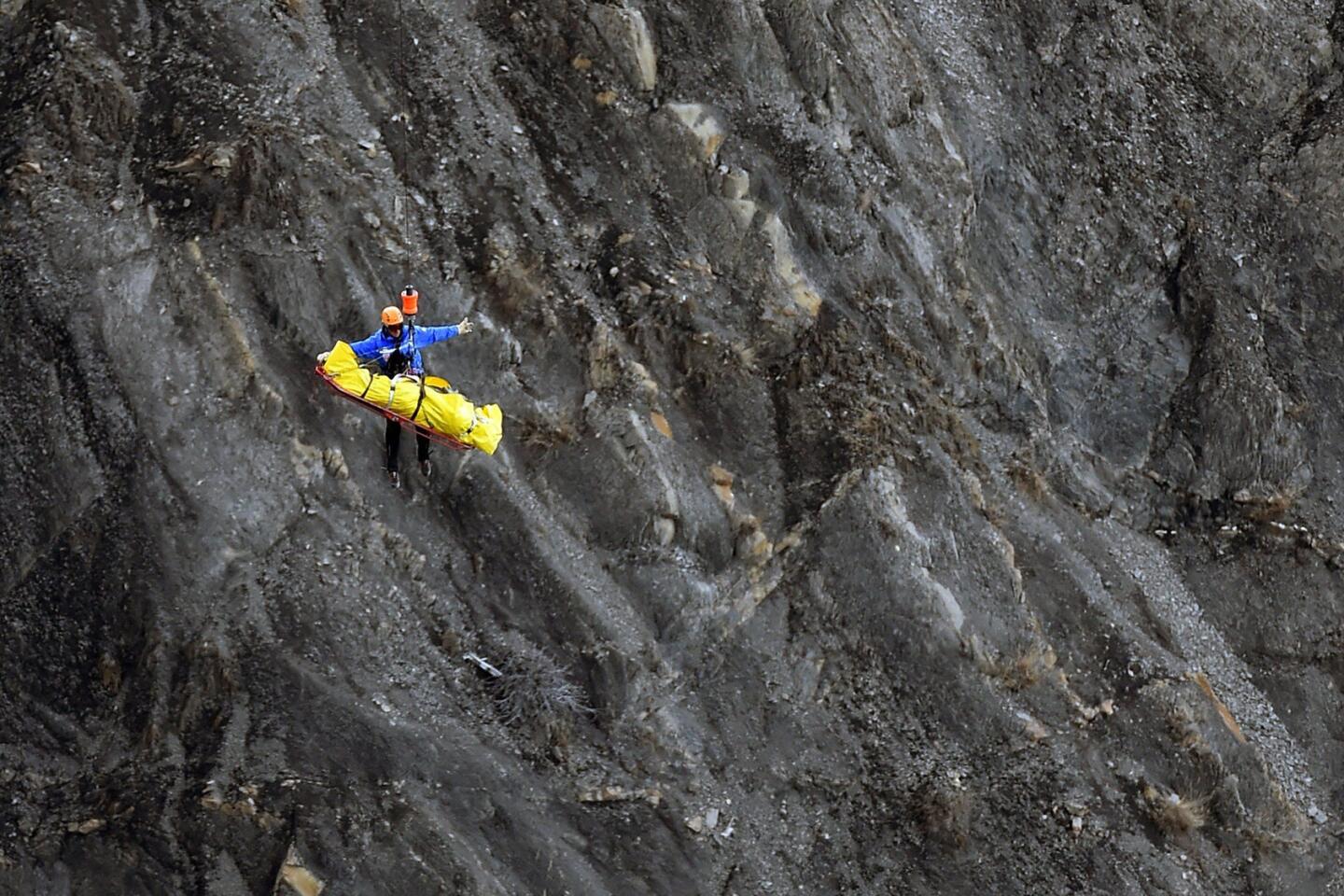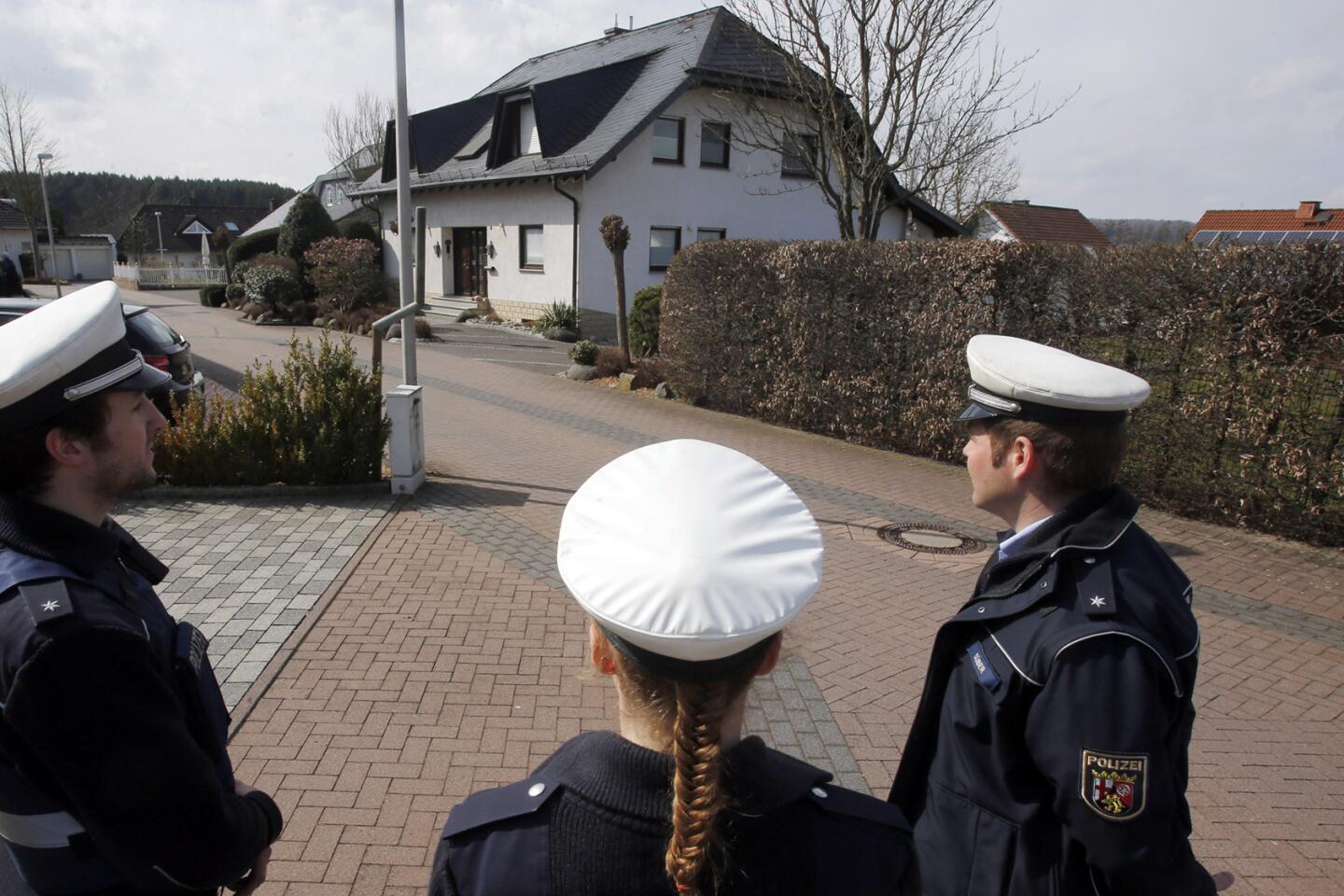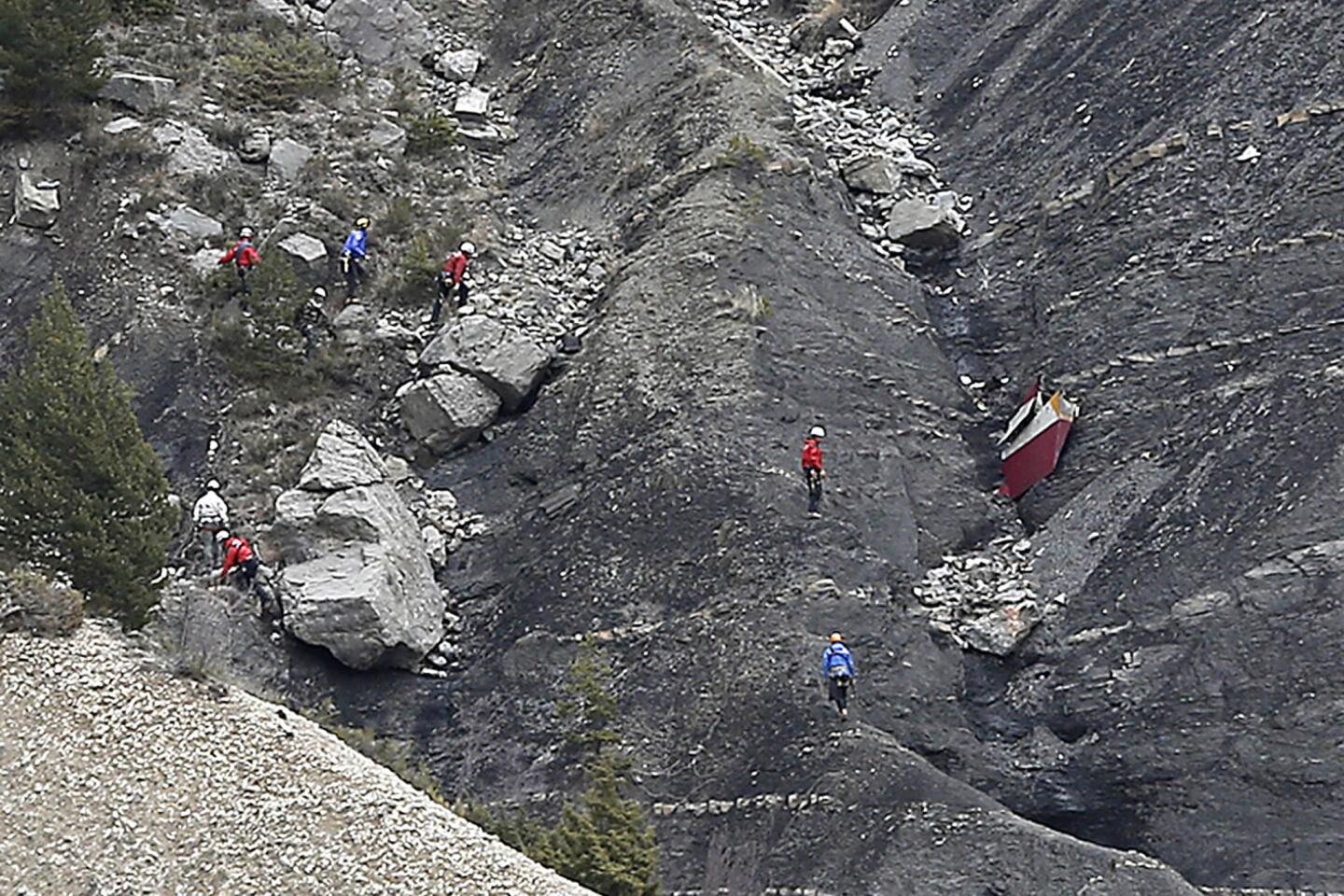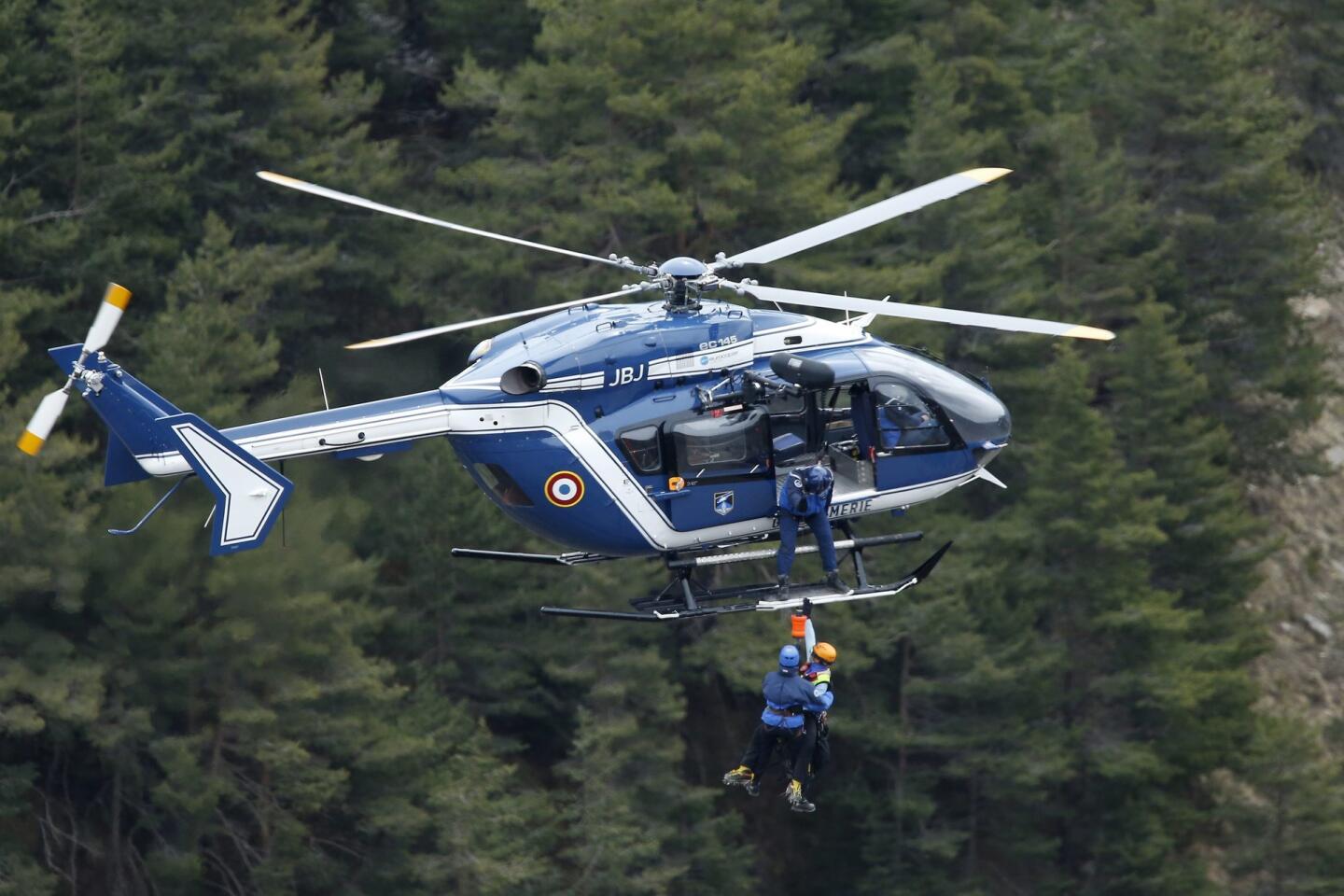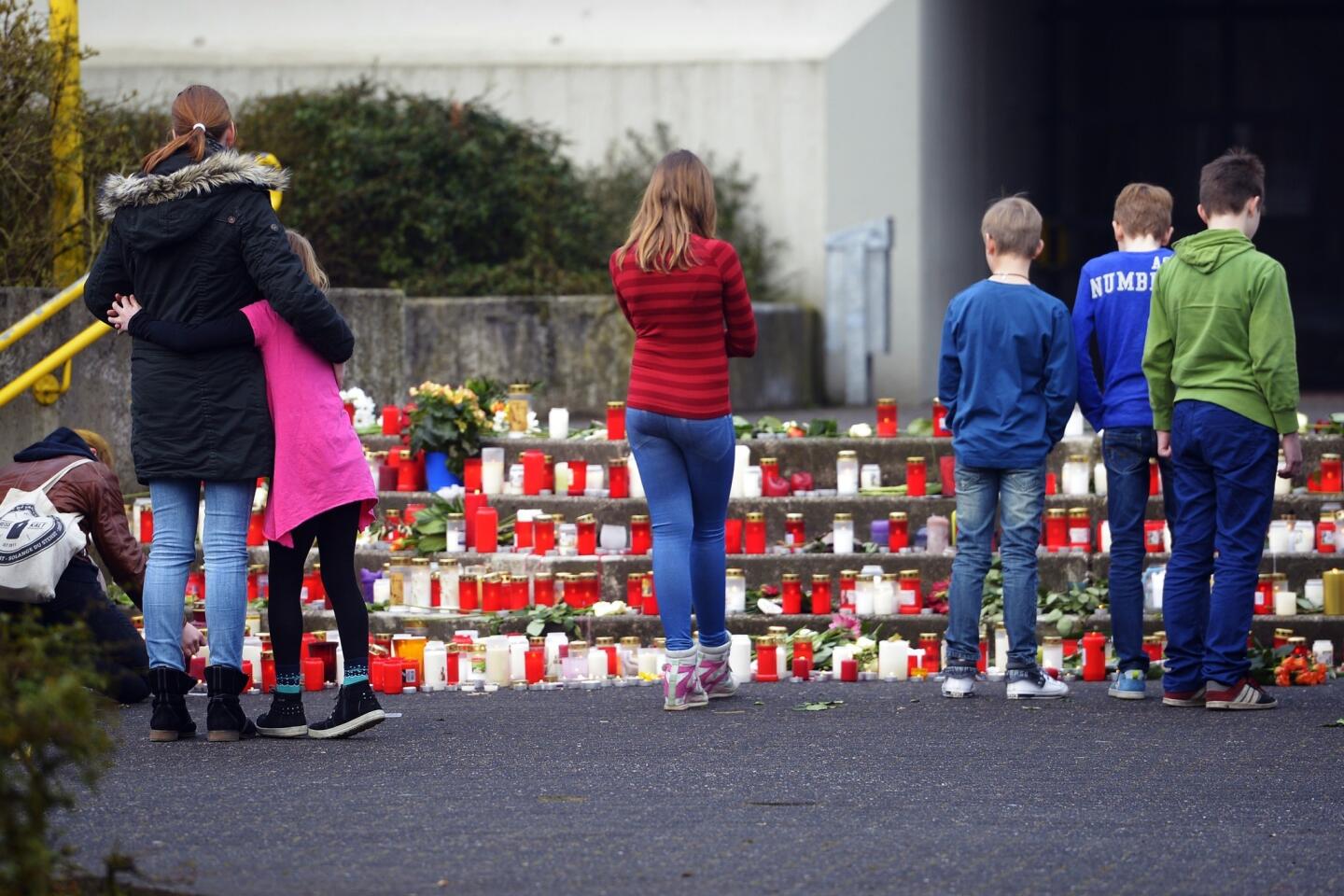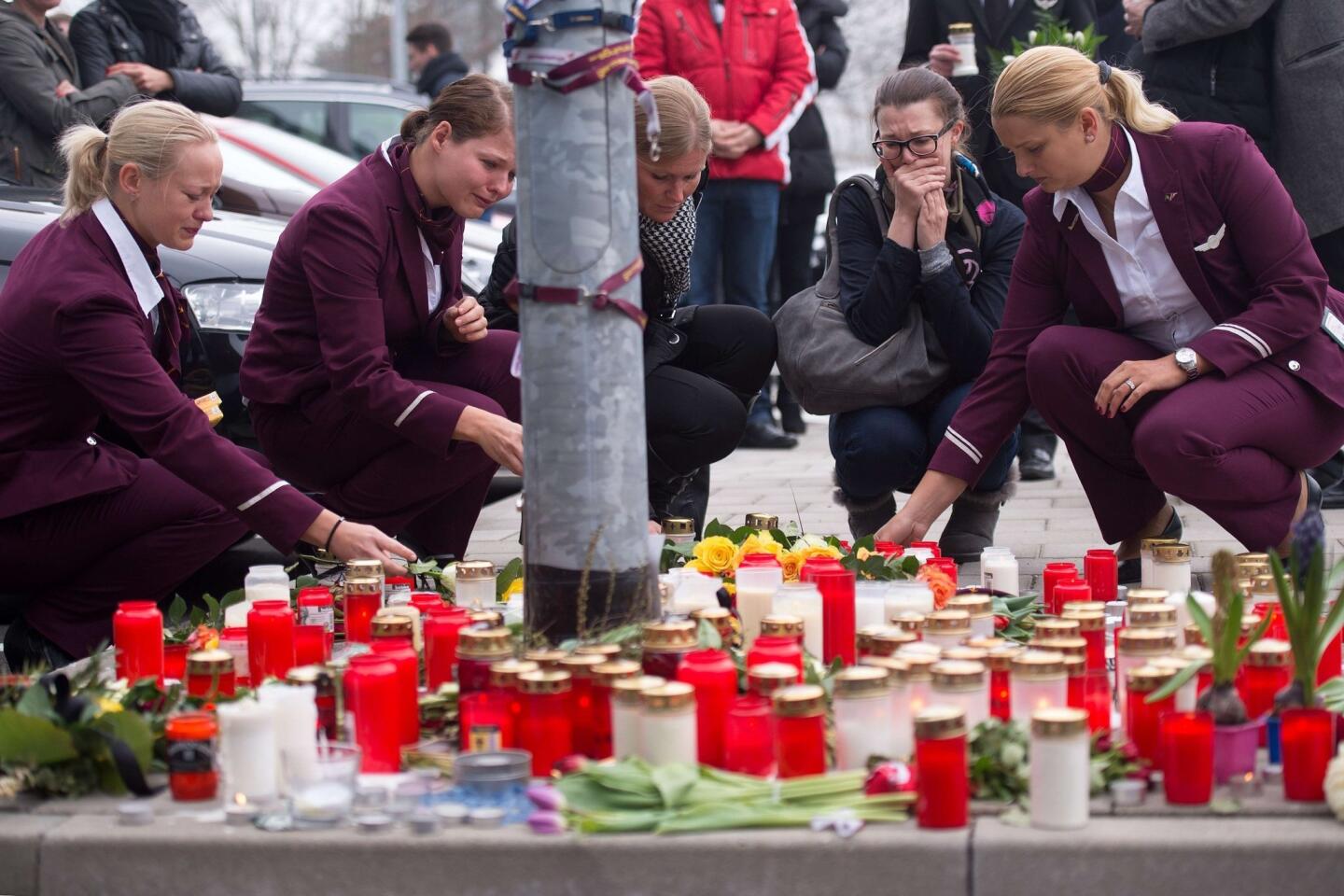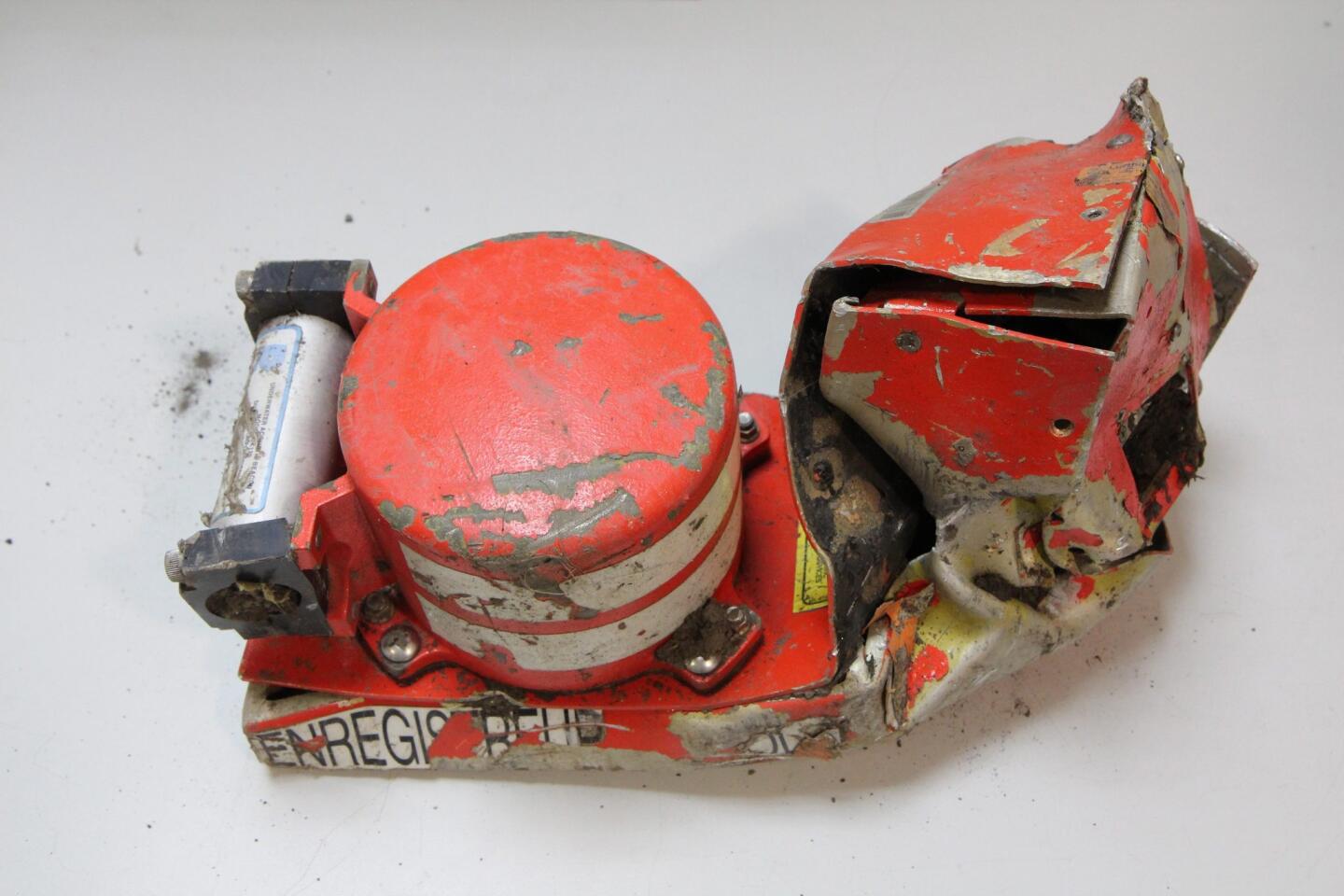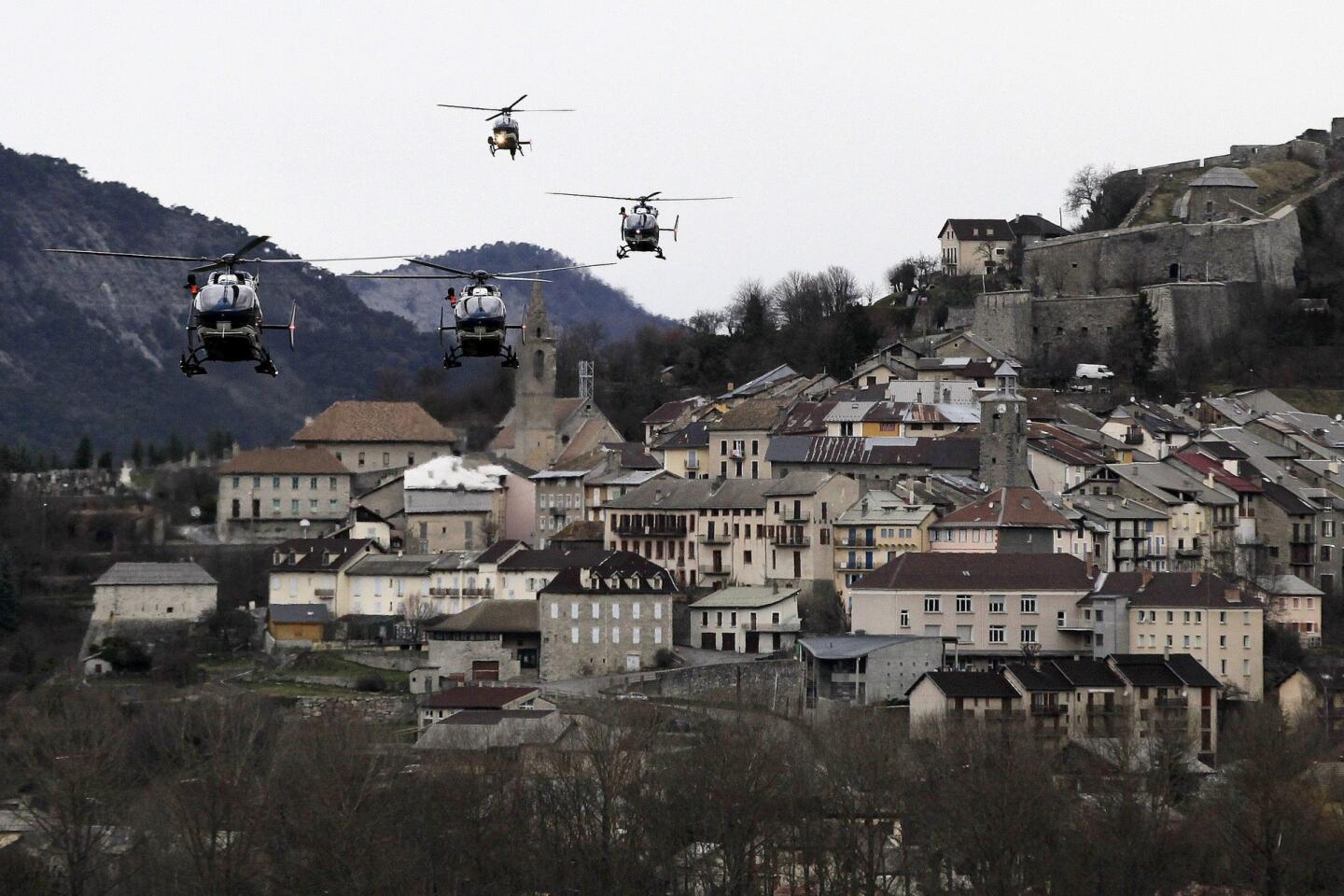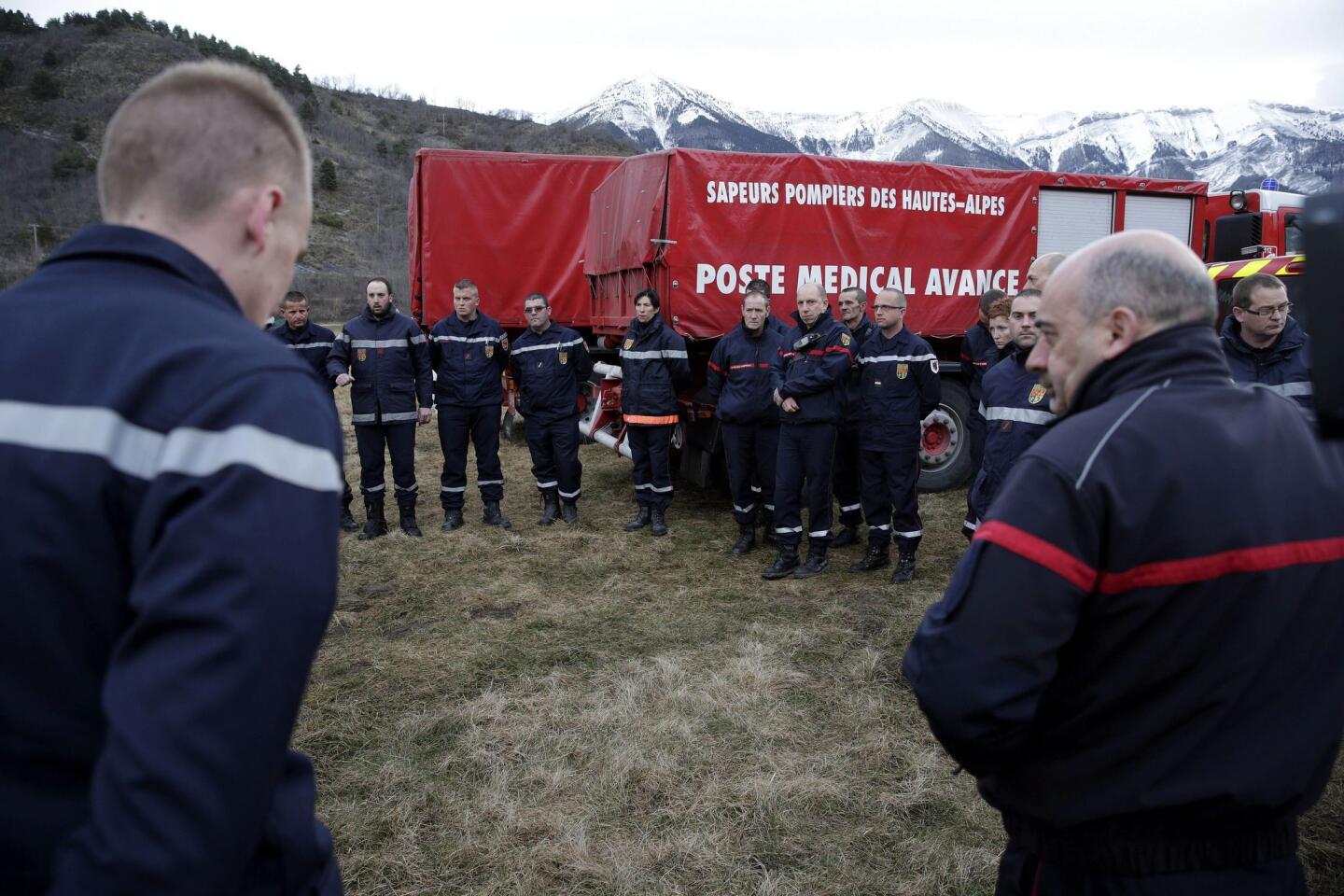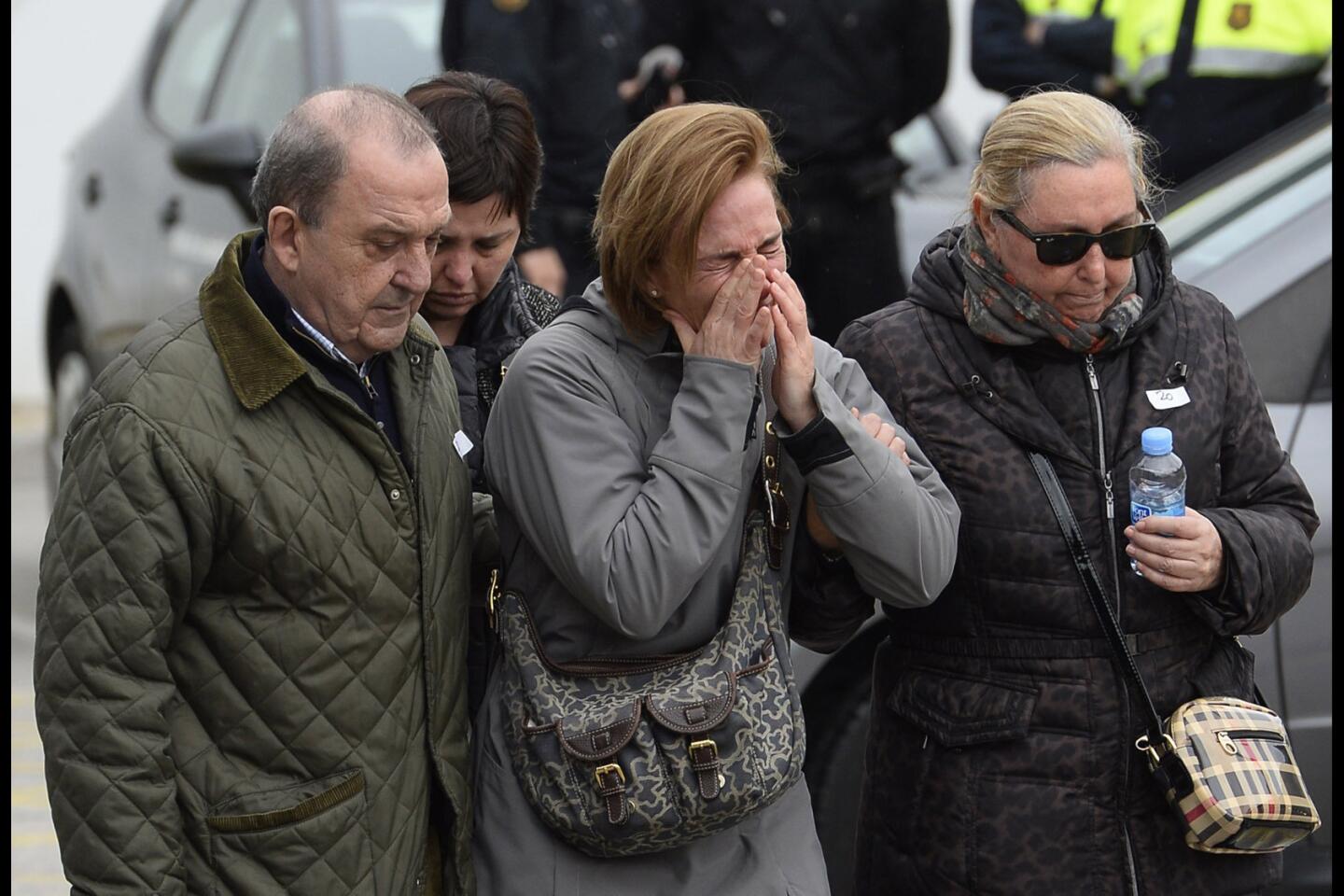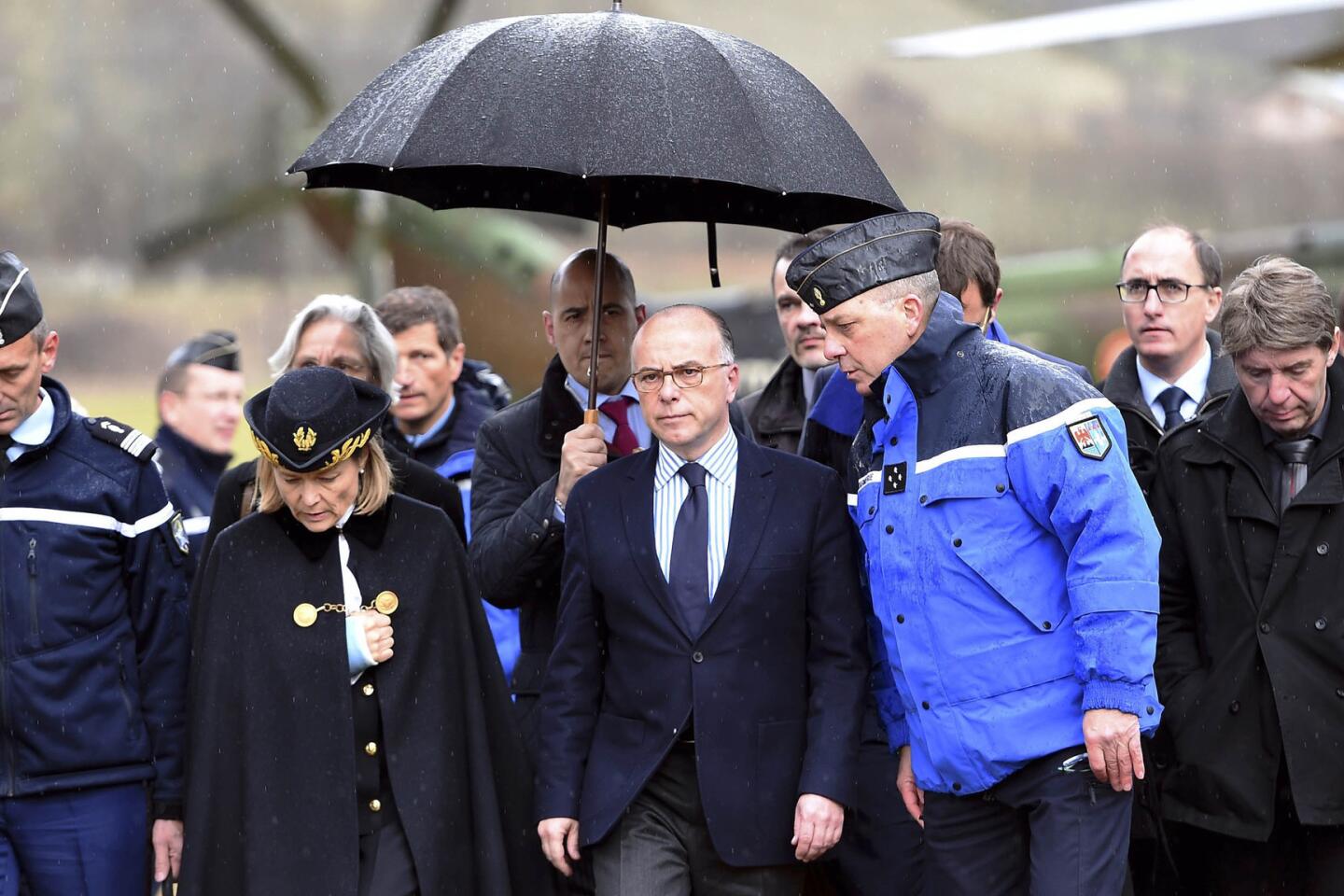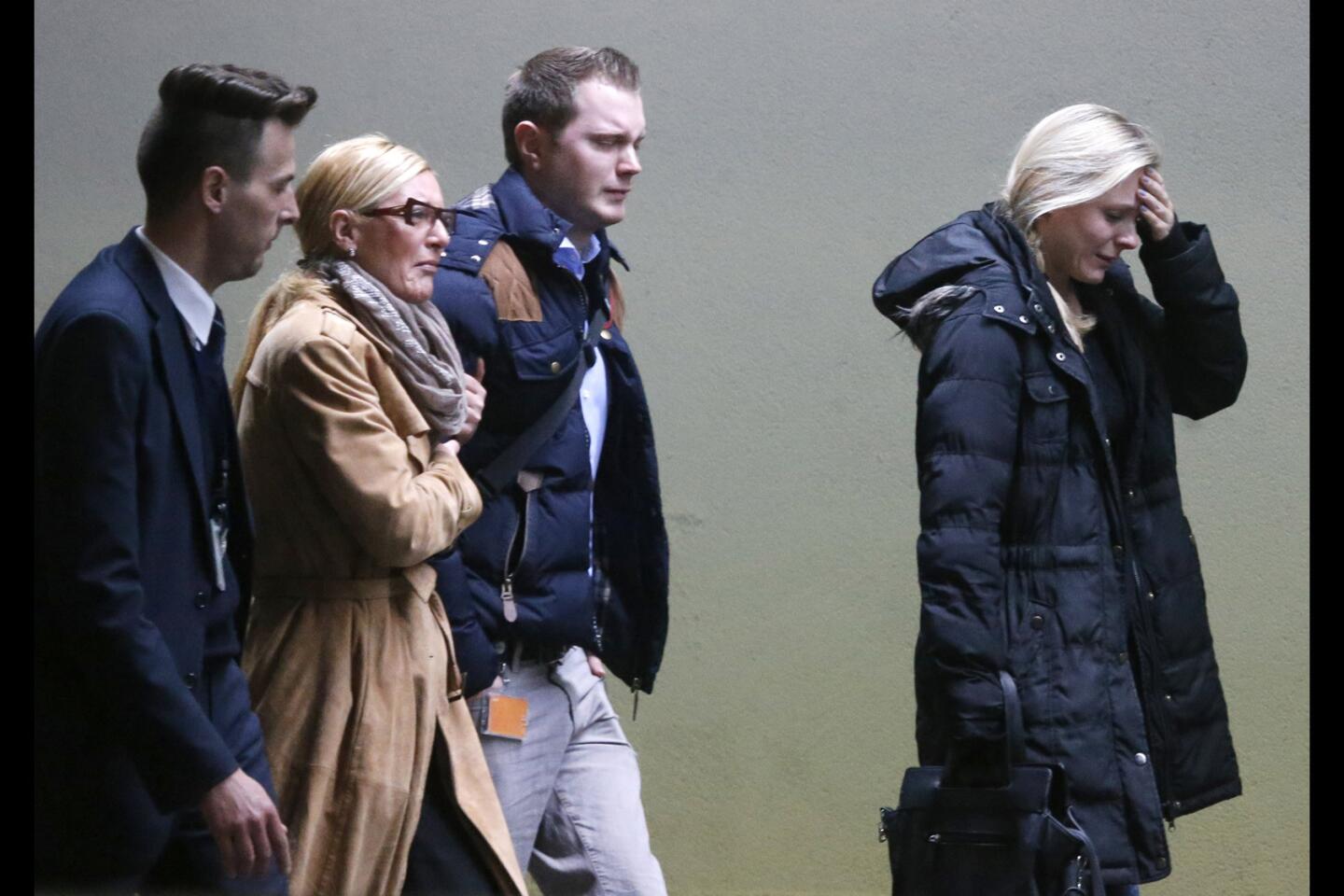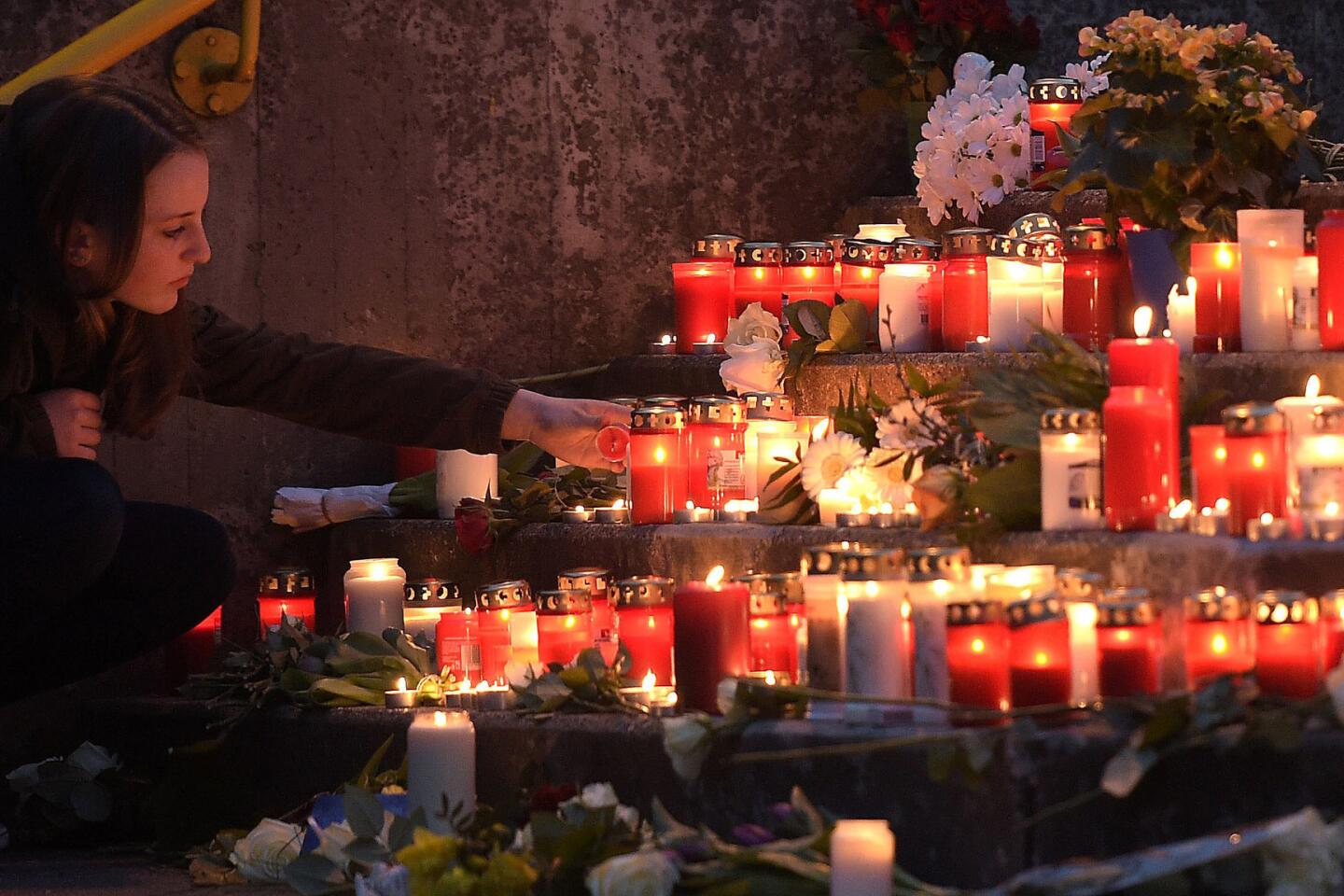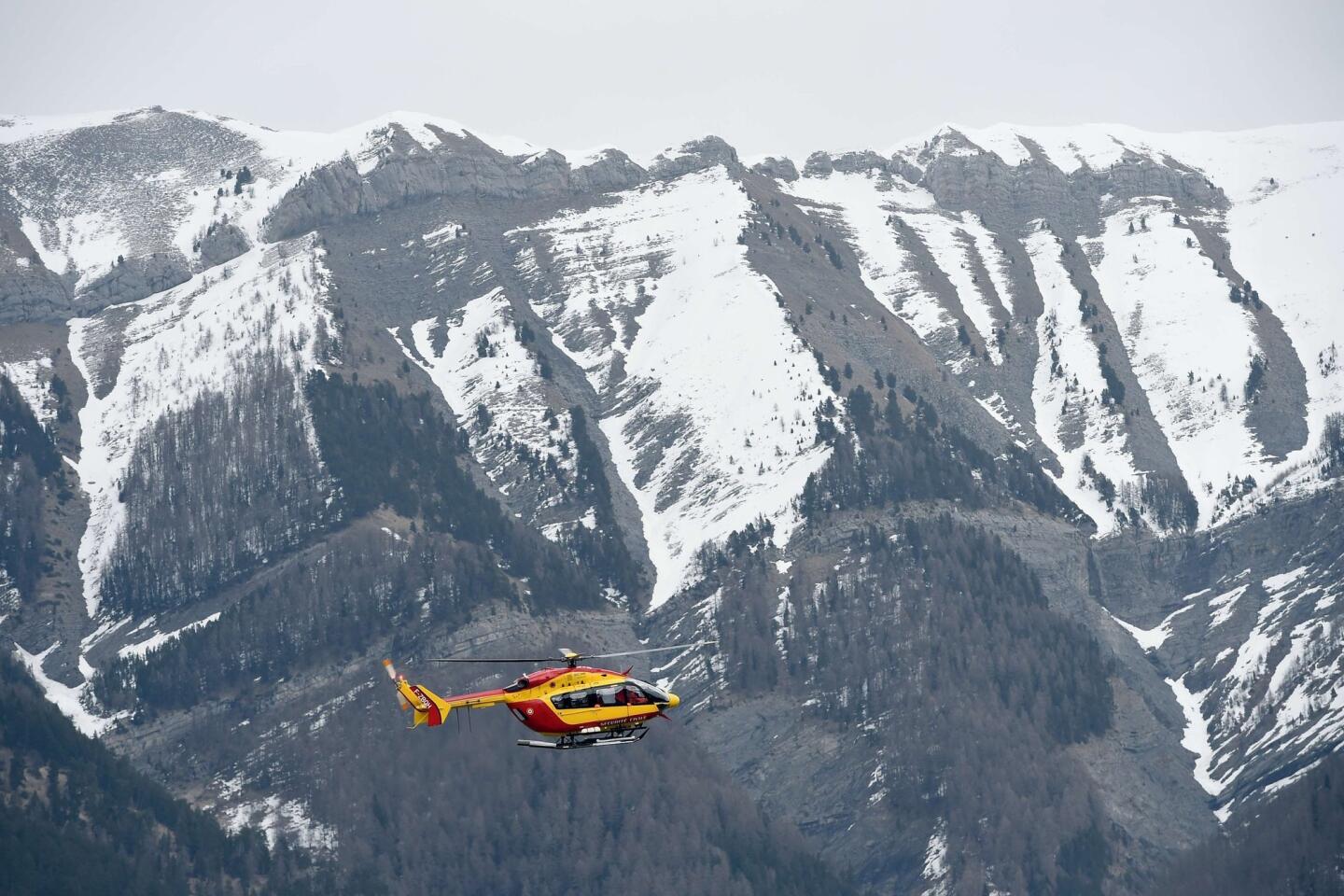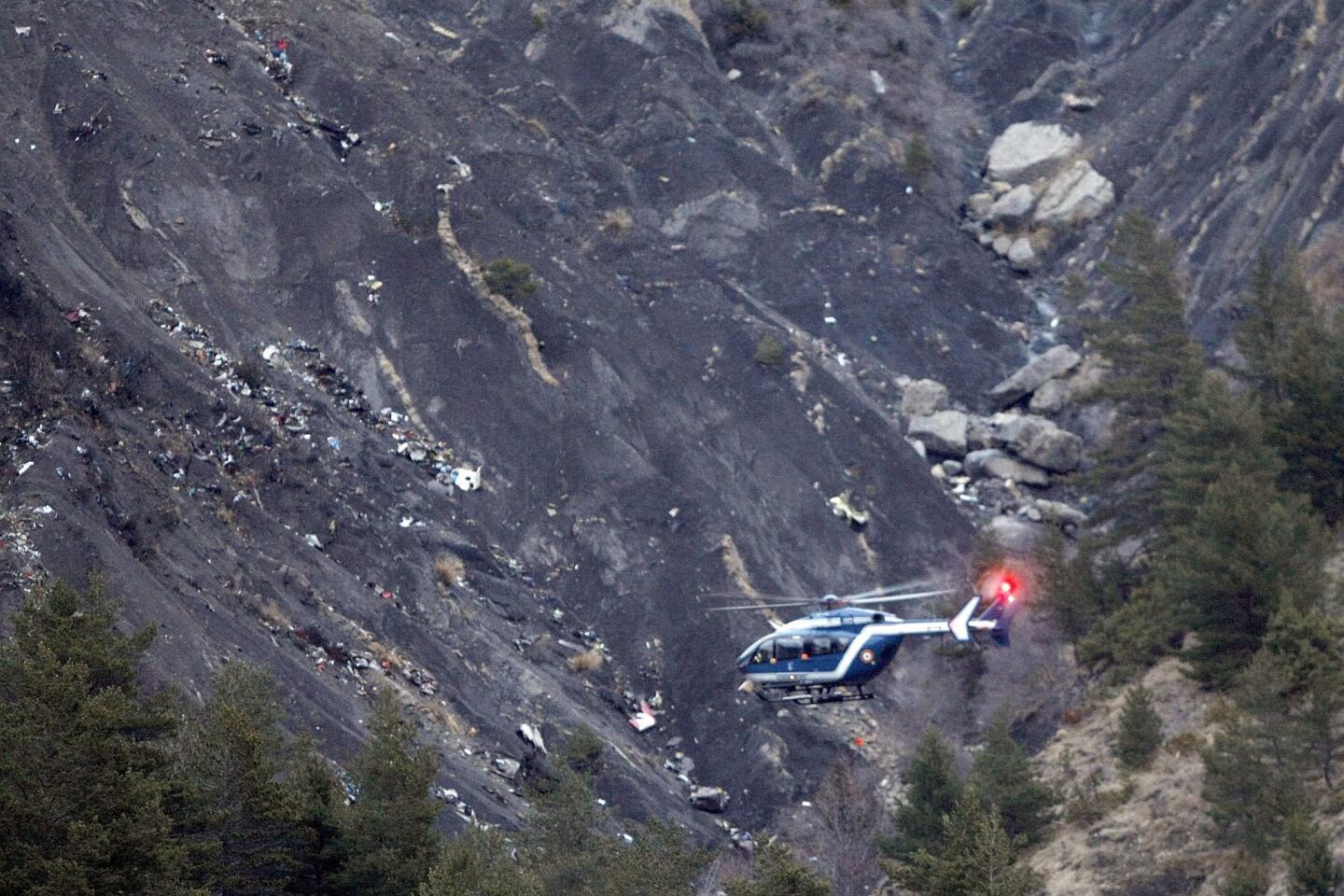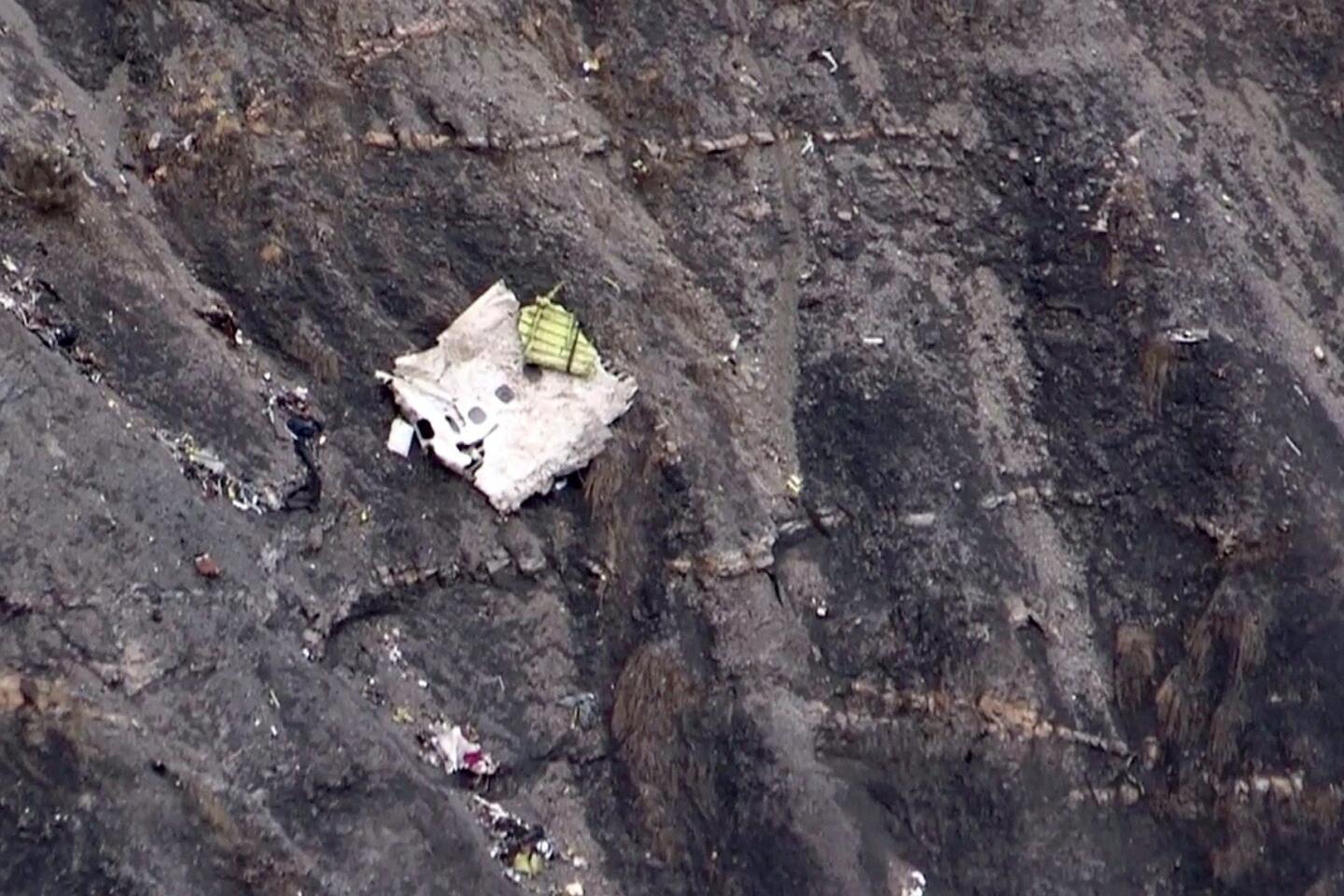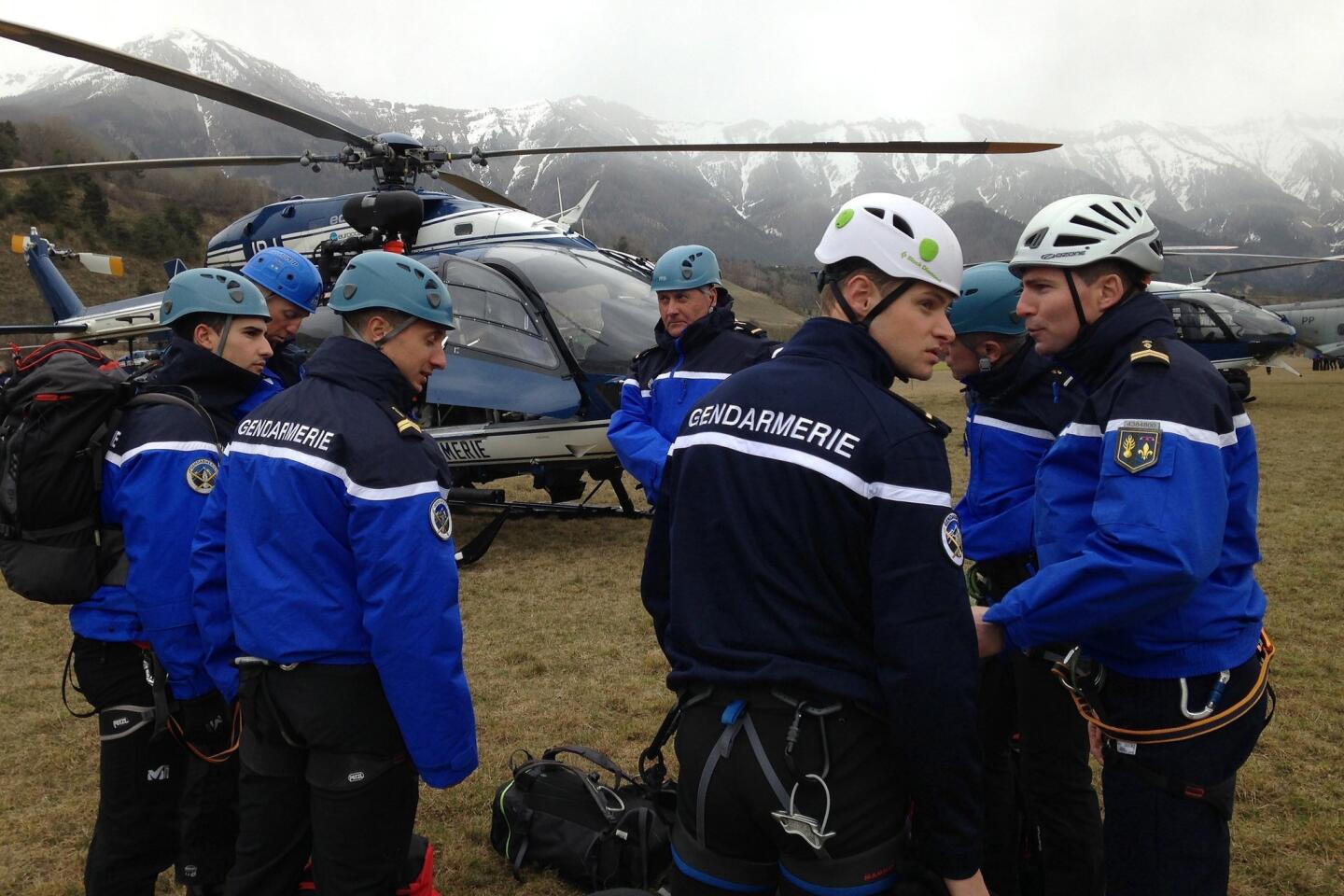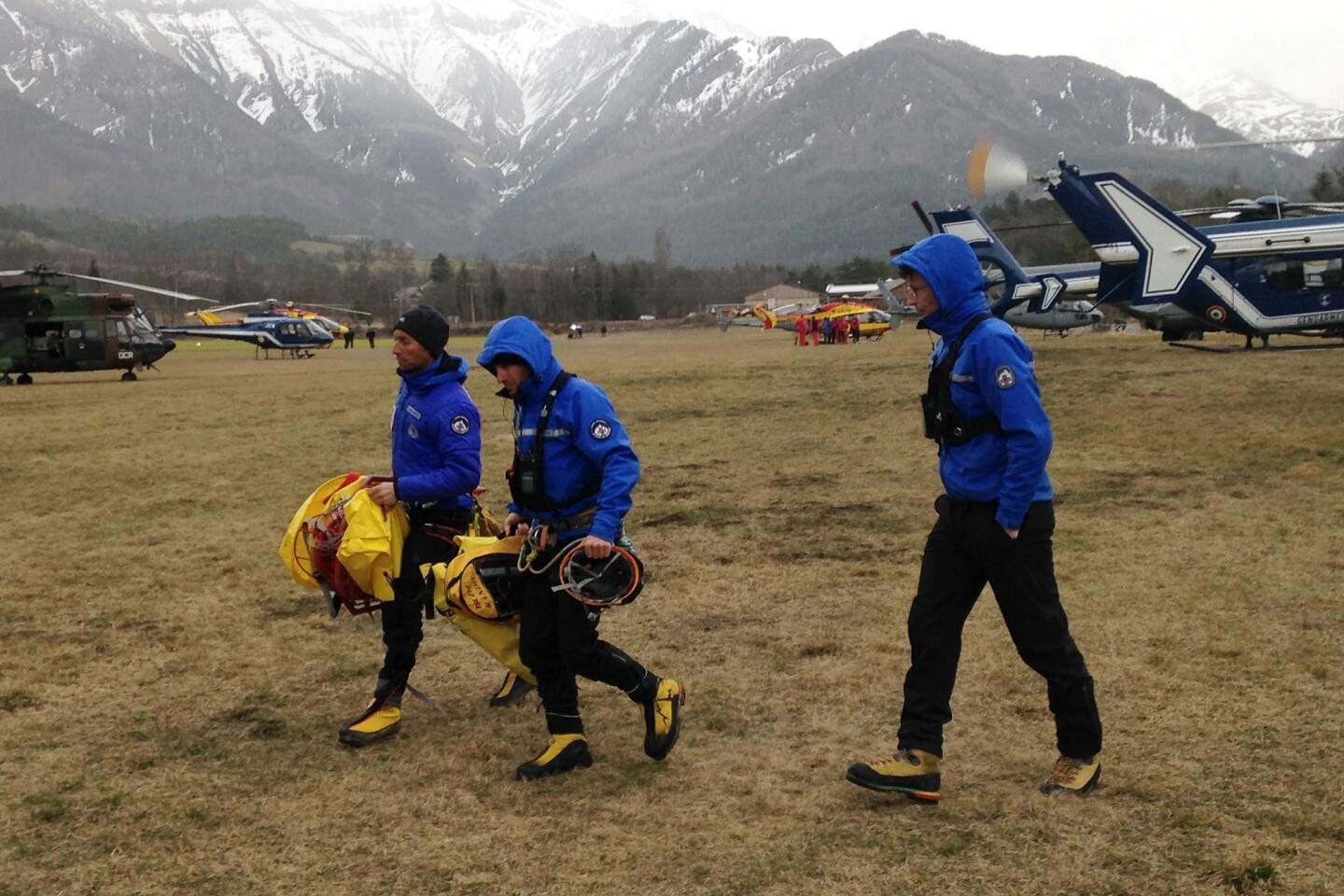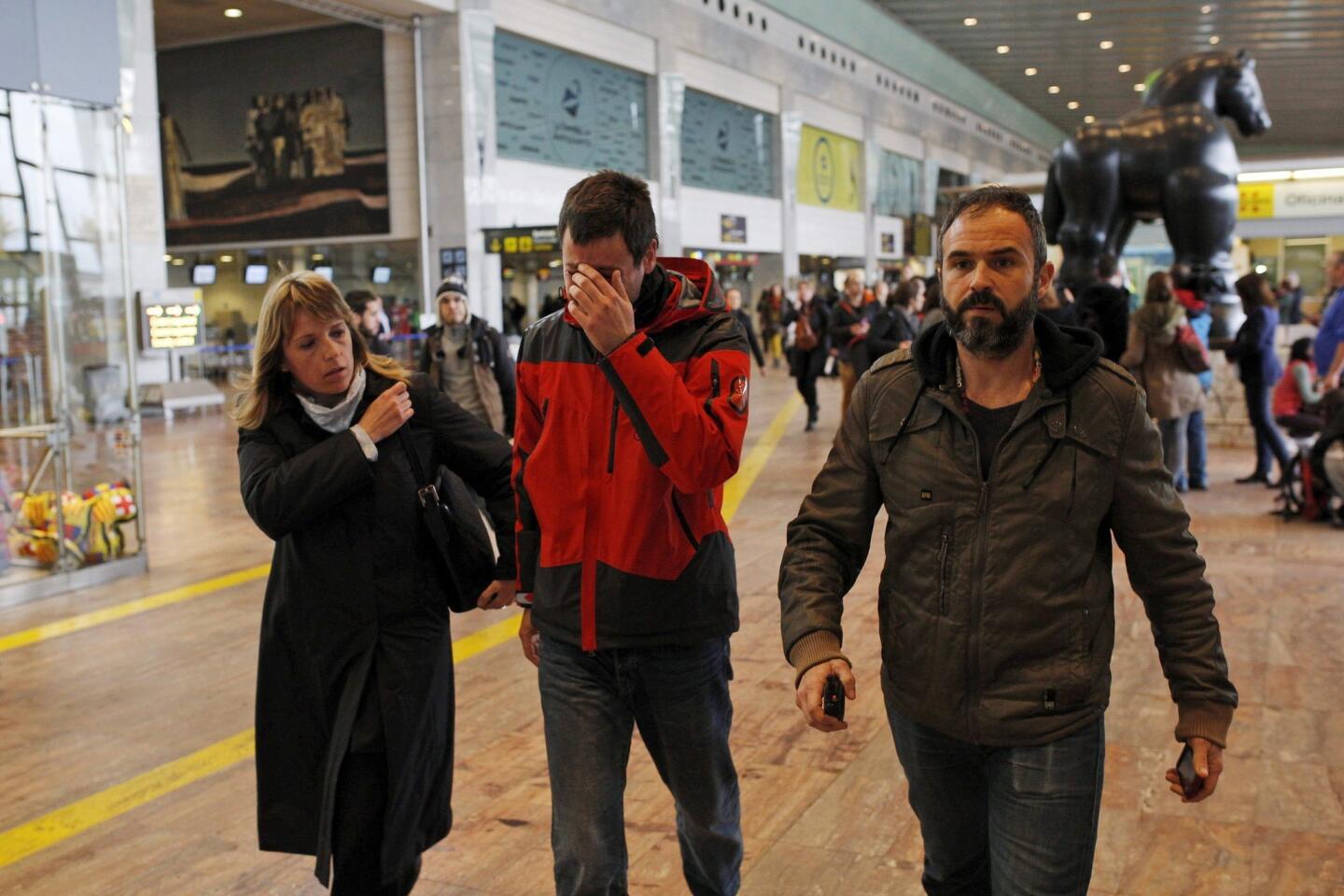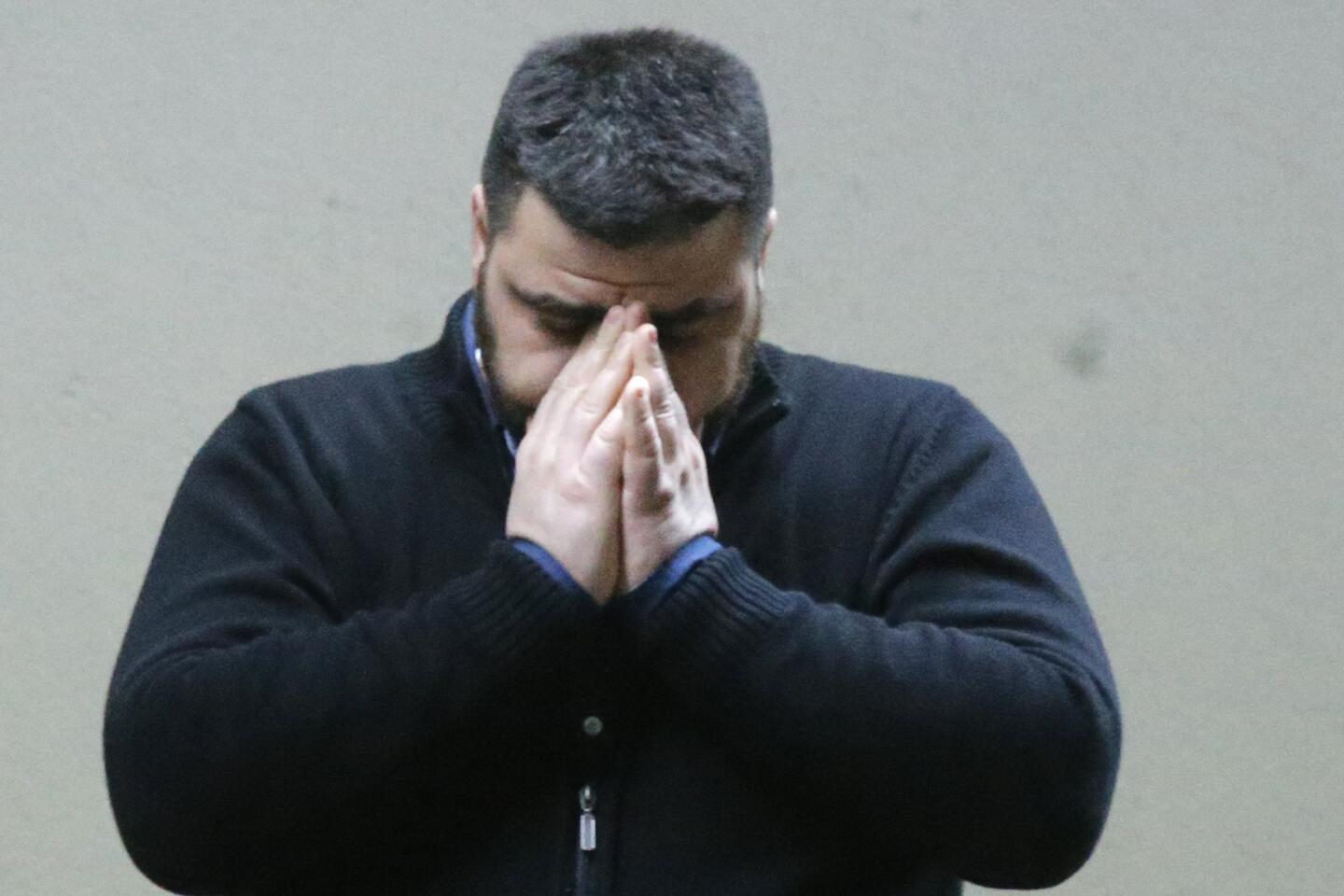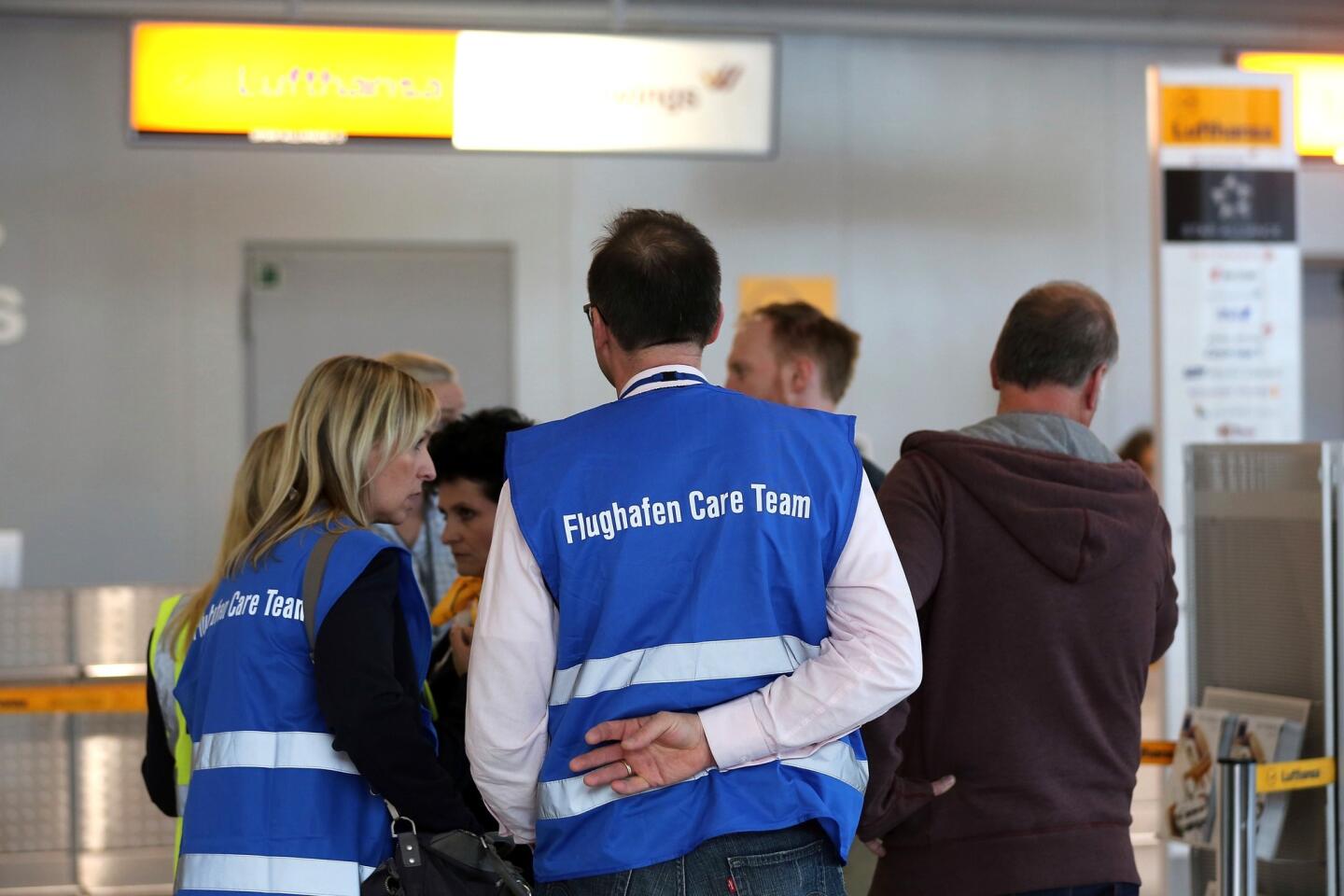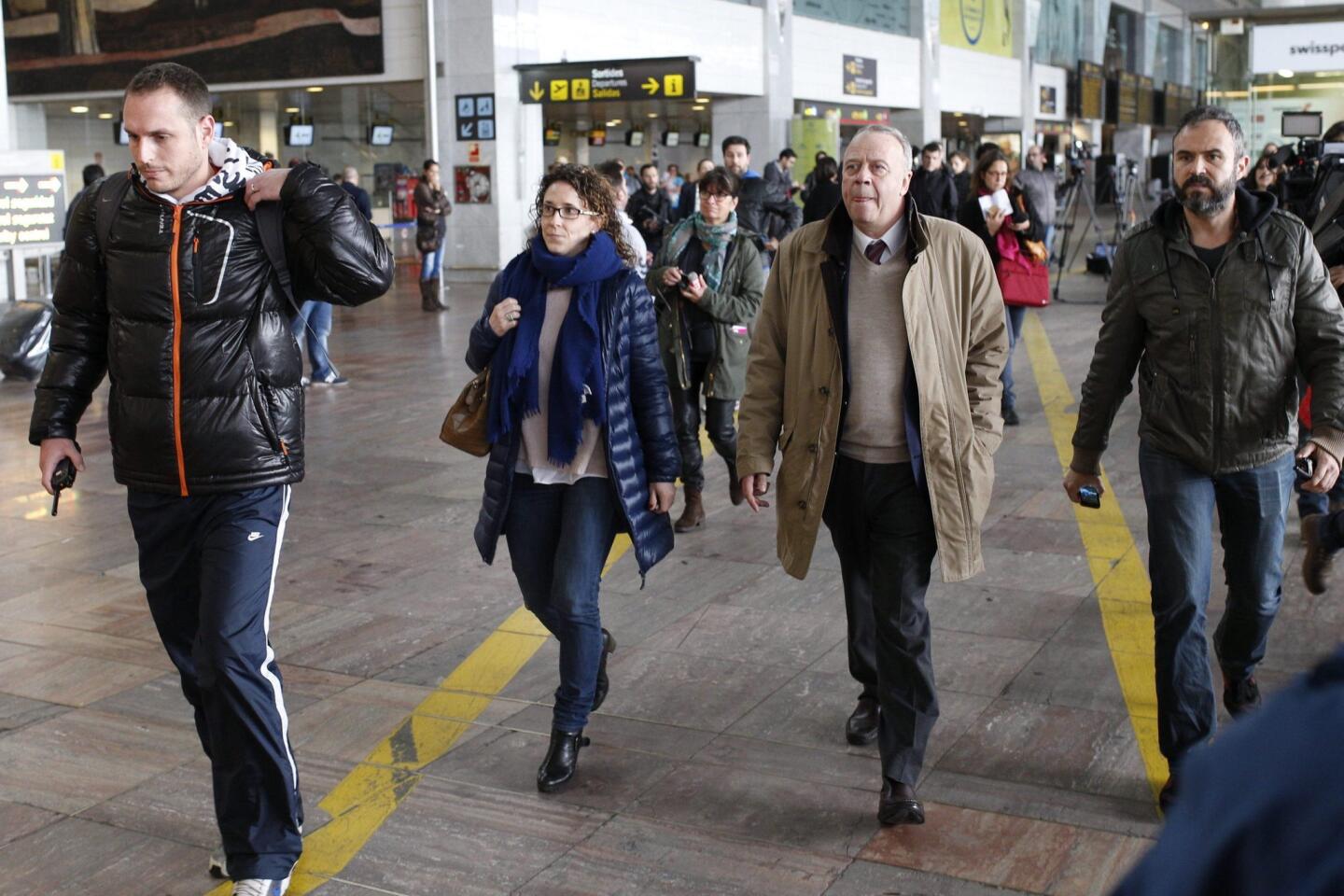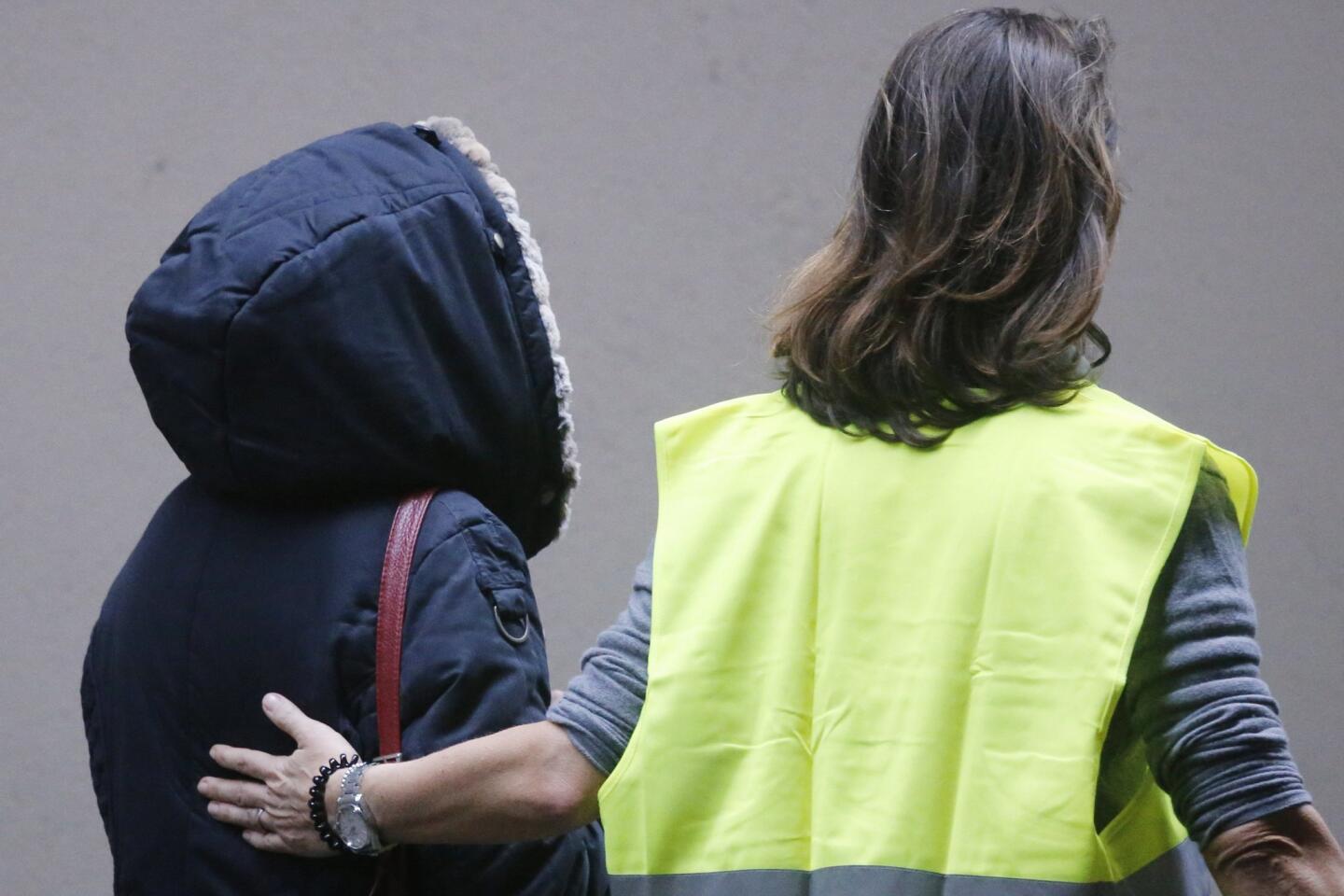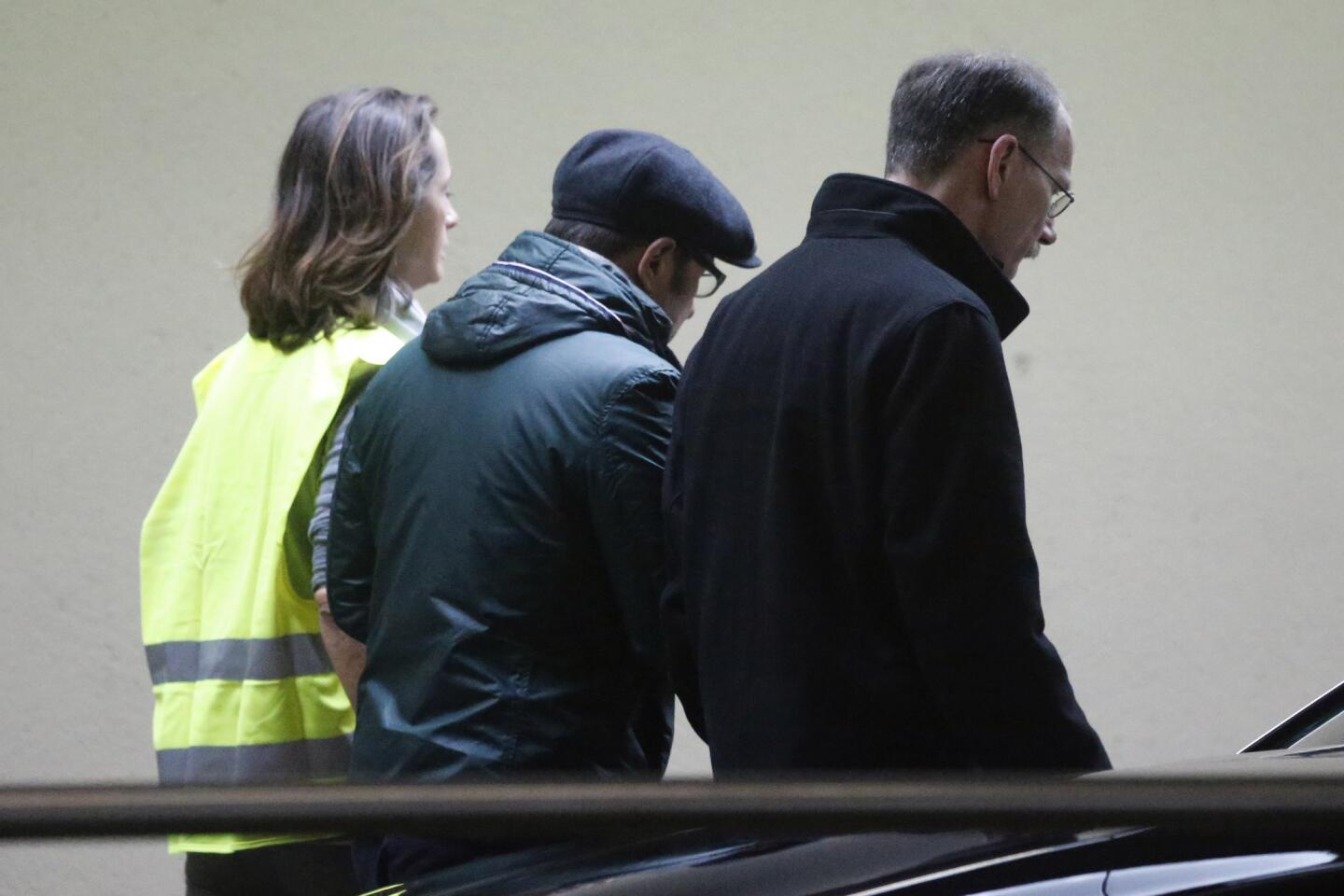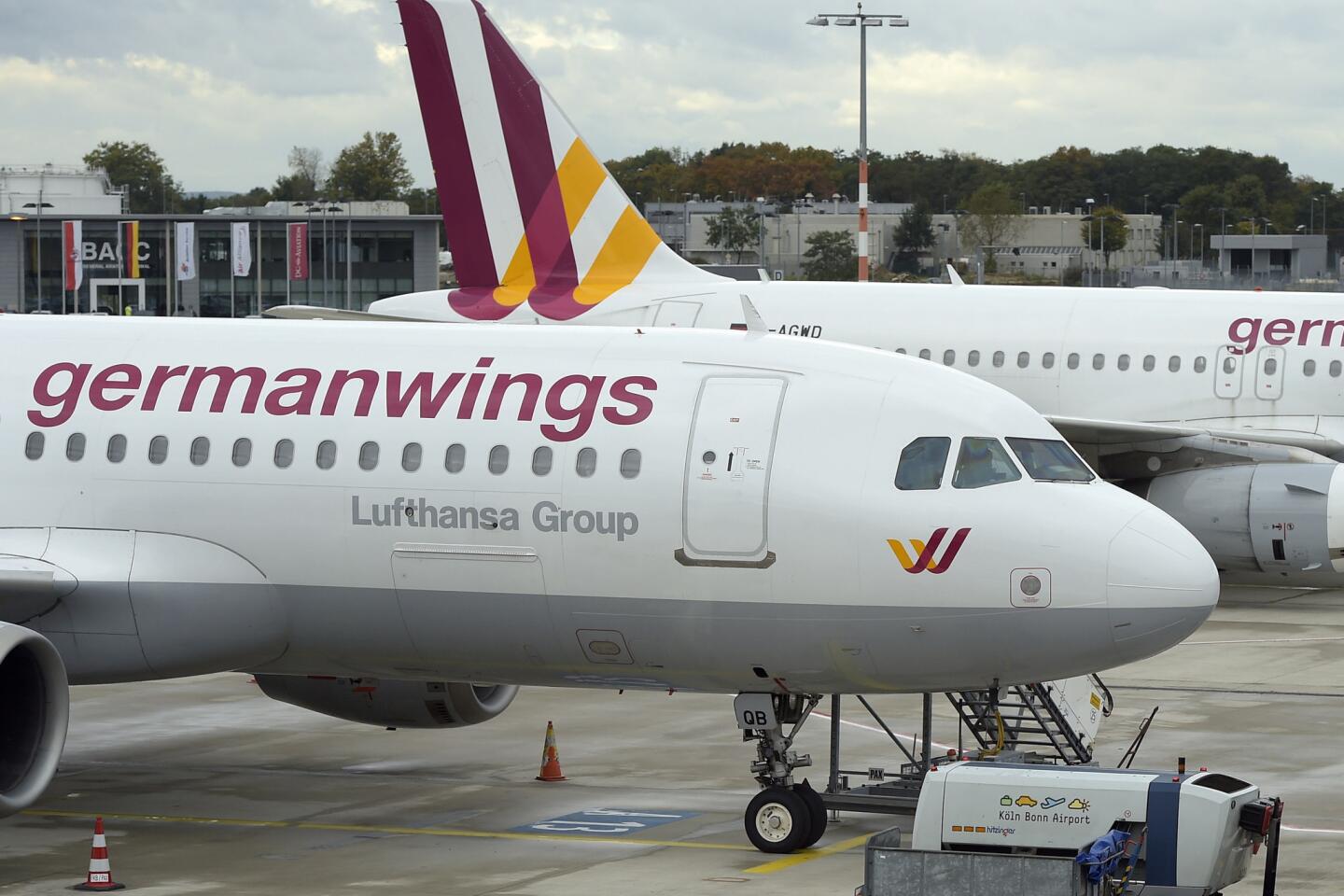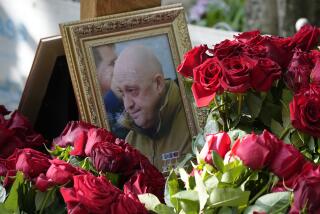Germanwings crash copilot tried descent on earlier flight, report says
Reporting from Paris â The copilot accused of deliberately crashing a Germanwings passenger plane, killing all 150 people on board, practiced adjusting the aircraftâs altitude downward on its outbound flight the same day, according to French accident investigators.
As the plane started its descent into Barcelona, Spain, on March 24, copilot Andreas Lubitz set its altitude to 100 feet on five occasions over about four minutes while alone in the cockpit, an interim report into the later crash revealed on Wednesday.
Lubitz then returned the Airbus A320âs settings to the correct altitude before the captain returned to the flight deck, according to Franceâs air accident investigation bureau, the BEA. The altitude changes were not noticed at the time because the flight was already in descent, the report said, but they showed up on the flight data recorder, one of the planeâs two âblack boxes.â
On the flight back to Duesseldorf, Germany, later the same morning, evidence suggests that Lubitz waited until the captain, Patrick Sondheimer, went to the bathroom, then locked the cockpit door and refused to allow him back in. Lubitz is believed to have then intentionally set plane on a fatal descent over the French Alps, where it smashed into a mountain. The crash killed 144 passengers and six crew members.
The BEA said flight recorders show Lubitz set the autopilot to take the plane from its cruise height of 38,000 feet to 100 feet, and that he manually increased the aircraftâs speed several times as it made a rapid but controlled descent, suggesting he was changing the setting intentionally.
The black-box recordings suggest that during the doomed Flight 9525 Lubitz was breathing until shortly before the fatal impact but ignored at least 11 calls from French air traffic controllers as well as radio contact from French military air defense systems and from the crew of another aircraft.
He also ignored Sondheimerâs increasingly desperate pleas to be let back into the flight deck and attempts to break down the cockpit door, according to sounds captured on the cockpit voice recorder.
âThe buzzer to request access to the cockpit sounded once during the descent, 4min 7sec after the captain had left. The interphone sounded in the cockpit 4min 40sec after the captain had left. Three other calls on the interphone sounded in the cockpit. None of the calls using the interphone elicited any answer,â the BEA report said.
The 29-page report concluded: âThe initial information from the investigation shows that, during the cruise phase, the co-pilot was alone in the cockpit. He then intentionally modified the autopilot instructions to order the aeroplane to descend until it collided with the terrain. He did not open the cockpit door during the descent, despite requests for access made via the keypad, the cabin interphone and knocks on the door.â
After the crash, prosecutors discovered that Lubitz, 27, had been treated for severe depression in previous years. Torn-up sick notes found in his apartment revealed his doctor had signed him off work on the day of the accident, and his personal computer showed that he had researched suicide methods on the Internet in the days leading up to the crash.
In Lubitzâs training records, his instructors and examiners rated his professional ability as âabove standard,â but his request to have his medical certificate renewed in April 2009 was refused âdue to depression and the taking of medication to treat it.â The certificate was reissued three months later.
Since the crash, European airlines have ruled that there should always be two crew members present in the cockpit.
Willsher is a special correspondent.
More to Read
Sign up for Essential California
The most important California stories and recommendations in your inbox every morning.
You may occasionally receive promotional content from the Los Angeles Times.
